- Yachting for beginners
- Owning a yacht
- Motor Yachts
- Sailing Yacht
- Indian Ocean
- Mediterranean
- Buying or Selling a Yacht
- Yachting Events
- FAQ – Luxury Yacht Charter
- FAQ – Buying a Yacht
- FAQ – Sell your Yacht
- How Much Does It Cost To Charter A Luxury Yacht?
- All our Blog Post & News


Yacht crew positions : Hierarchy, Missions & Salaries explained
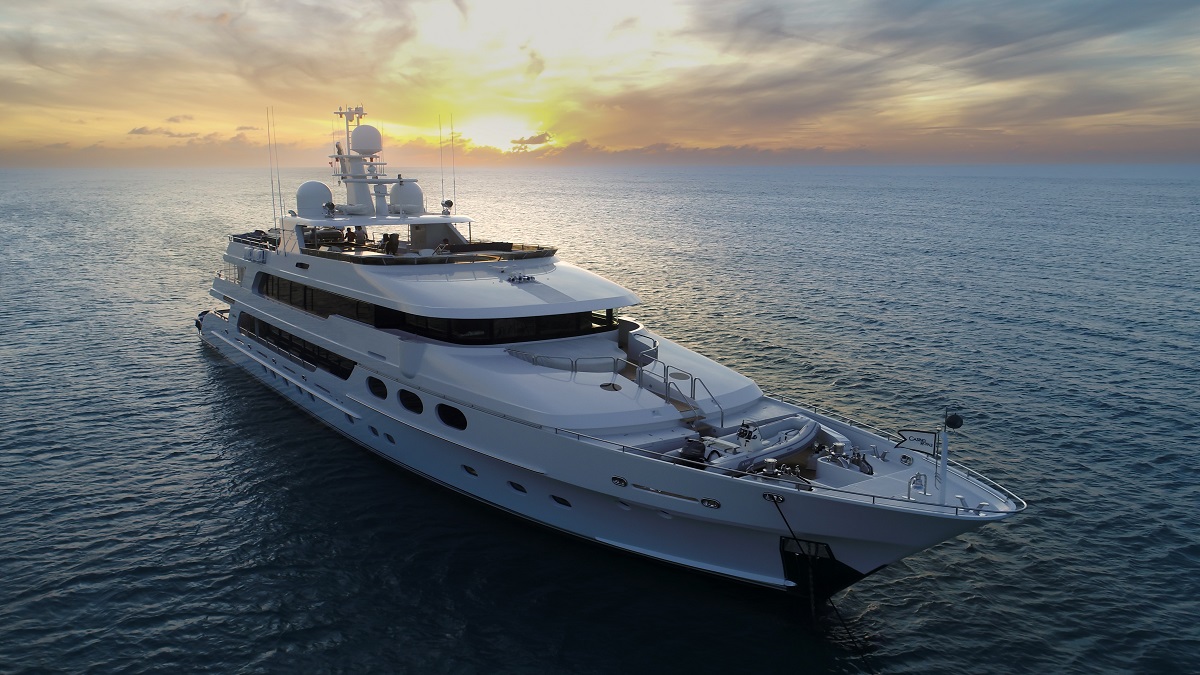
Like any well-run hotel, restaurant, or other luxury service, a crewed yacht needs organized structure and good management. Whether you’re staffing your own luxury vessel or looking for an exciting career working and traveling the world, you need to know how this structure works, and what you can expect to pay or earn and do in the various roles on board.
Every yacht is a little different, and organization may reflect the style of the captain or the demands of the owner. But the same jobs need to be done on almost every boat. Organized with ranks, heads of each division report to the Captain. It’s not a military-style organization, but there are parallels with merchant marine grades and structures.
Smaller yachts need fewer crew, and staff may wear multiple hats that cross more traditional divisions and may combine some jobs with others. Large yachts have more distinct divisions or subdivisions, with more specialization to divide tasks and manage staffing. The core skills are the same, but finding staff with the right blends to do the jobs is key. Crew with broader skills are highly sought after.
As a yacht owner, you shouldn’t have to worry about day-to-day management decisions or organizing all this. That’s why you have a captain, and it’s better to leave staffing decisions entirely up to him or her. But it’s still important to know what it is people you’re hiring do, why they’re there, and how many you need. You don’t want too many crew, or to be short-handed. An understanding of what your yacht needs helps you talk to the captain to keep your yacht running how you want it.
For those looking to break into yacht crew work, consider your skills and strengths, and what jobs appeal to you. You’ll need training before you work, and you can direct your job path through the training you seek. Your goal is a suitable position on a well-run yacht, so make yourself the most attractive candidate possible.
Yacht Work Life
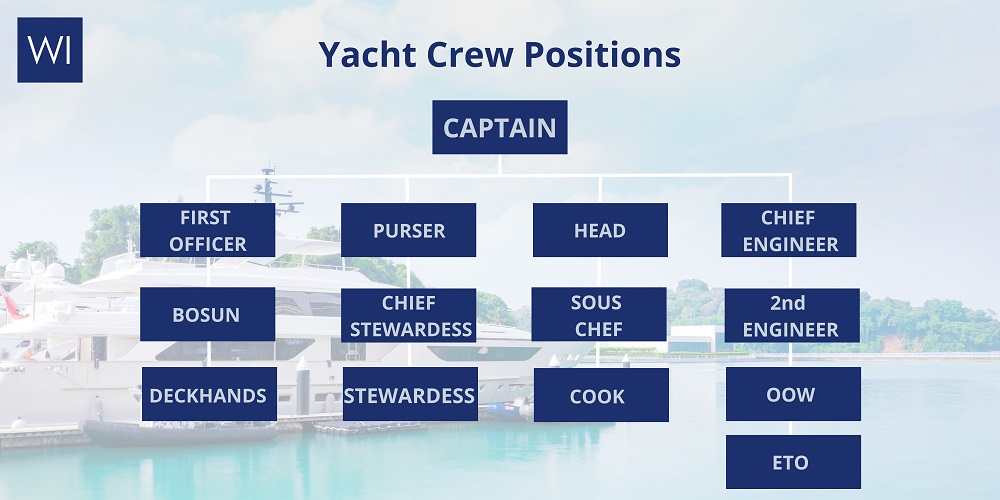
Working on a yacht is also living on the yacht. Crew must have a space to sleep, food, and all the basics that any employee needs. Large yachts have space reserved for crew, and owners looking for quality crew should provide good working and living conditions. Your crew takes care of you, and you should take care of them.
Depending on where a yacht operates or what flag she flies, a variety of labor laws or rules may be in effect. These requirements may be for work visas, contracts and written agreements, and compliance with merchant and ship crew treaties and laws. Be prepared to have work and non-disclosure agreements between yacht and crew, though a few yachts skip this.
Seasonal Jobs
Many yacht positions are seasonal. Year-round employment is more likely for senior crew like the captain and department heads, but not all yachts see year-round use. And some yachts may use different crew in different locales between seasonal moves.
Any job listing should give seasonal information, with geographic information, the length of the season, and the prospects for year-round positions and repeat employment.
Hours, Salaries, and Expectations
Yacht crew is a service job at its core, and every yacht owner is looking for service-oriented people who understand how to deliver a hotel-quality living and restaurant-quality fine dining. Work experience in luxury hotels and restaurants is a big plus for some jobs, and makes breaking into yacht work easier.
Yacht work can be very demanding, with periods of intense work when the owner and guests or a charter party is on board. Long days aren’t uncommon, but often balance with slack time when the boat is empty of passengers. There is always work to be done, but there’s usually a chance for time off.
Most salaries are monthly, since many positions are seasonal. Pay ranges are commensurate with experience, rank, and responsibility. Private vessels usually offer higher base pay, as charter crew can earn tips on top of their base salary. Because of the demands of the lifestyle, compensation is good and you have minimal living expenses on board.
Benefits and Time Off
Because so many jobs are seasonal and may occur in different countries and locations, benefits offered to yacht crew vary widely. But it is not uncommon for crew to be offered health and accident insurance and a flight to the vessel. Living on board, you’ll get food, rooming (usually shared), basic toiletries, uniforms, and laundry. Yachts with a longer view may offer additional training to long-term prospects.
Time off is usually linked to boat use, and may be sporadic in-season or when the boat has the owner and guests on board. There will always be some time off, but it may be between very intense work periods.
Most crew jobs have an employment contract that meets the Maritime Labour Convention 2006 (MLC). This should spell out the contract period and duration, as well as salary, leave and time off, probationary periods, repatriation policies, and any other crucial details to meet the minimum international standards of crew welfare.
This contract should also contain shipboard policies on confidentiality and non-disclosures, drug and alcohol use on board, personal hygiene expectations, interpersonal relationships, and dispute resolution. Job expectations and requirements can also be included, with specific language about roles, tasks, and cooperation between divisions.
Note that all crew agreements will explicitly prohibit drug use on board, most limit alcohol consumption and ban hard liquor on board, and many boats have policies prohibiting intimate personal crew relationships. Because the crew is living on board full time and in close quarters, rules to maintain decorum and crew harmony may be in writing.
Training & Certificates
Two key certifications are required for yacht crew. Employers look for the STCW (Standards of Training, Certification and Watch-keeping for Seafarers) and the ENG1 (Seafarer Medical Certificate). Insurers generally require crew to have these two certifications or the equivalent.
The ENG1 isn’t a class. It’s a medical exam to ensure that the crew is physically fit to serve at sea and has no underlying conditions that may arise far from help. It’s best for prospective crew to secure the ENG1 before investing more time and money training.
STCW is a week-long class on the basics of onboard safety. This includes hands-on modules covering personal survival, fire safety, first aid and CPR, accident prevention, and security awareness. It needs to be refreshed every five years.
Shared, Hybrid, and Crossover Jobs
Larger vessels will have more defined duties and specific areas of responsibility. But smaller yachts may want the crew to have different roles in different situations. For example, a hybrid job description may read “3rd Engineer/Steward” and describe a role in engineering when the boat is empty but on inside crew when passengers are on board.
When hiring or seeking jobs be prepared to look for creative crossover skill sets to meet the needs of the vessel.
Extra Skills and Duties
Any extra skills outside the regular duties makes crew more attractive. From stewards who can teach yoga, give massages or play cocktail piano to deck crew who know how to water ski, SCUBA dive, or fish, anything that crew can bring to enhance the passenger experience adds value to the employee.
If you’re looking for a position, list the skills you’d be comfortable using. If a vessel owner is looking for something specific, spell it out and figure out how that special duty fits into the employee work day.
The Four Main Divisions
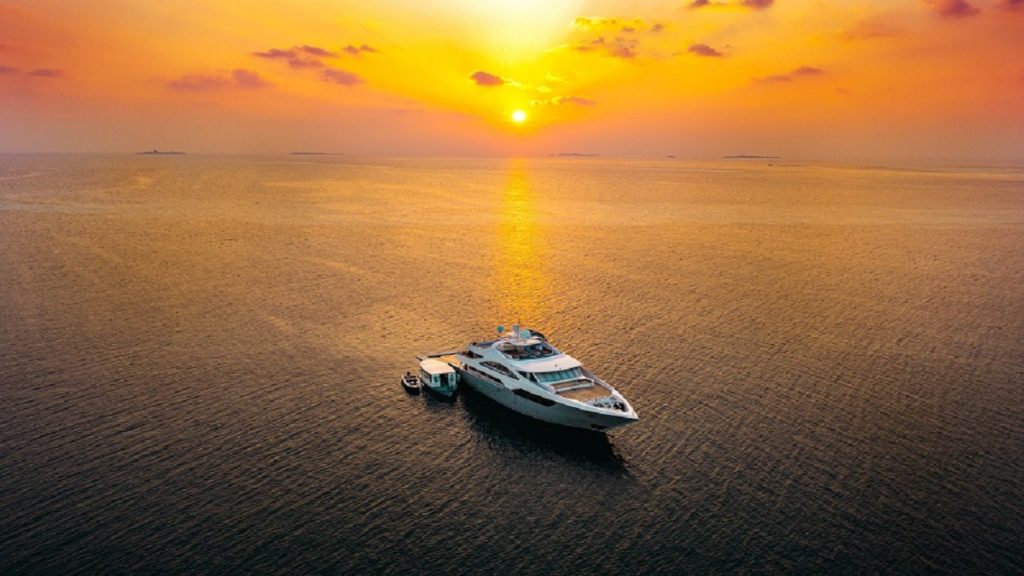
Most yacht crews break into four primary divisions which group related tasks and responsibilities together. While the grouping sounds like it’s by section of the boat, they’re really more functional. For example, stewards (Interior) will definitely serve meals, whether they’re in the main dining room or out on deck. Deckhands (deck) are going to be involved in painting, sanding, and varnish jobs anywhere on the boat.
The deck crew handles most of the exterior operations of the yacht, and runs it. Deck hands and crew keep the boat looking clean and shiny, and handling most vessel operations. This includes driving and operating the yacht, navigation, running all launches and ship’s craft, handling lines, and all maintenance and painting, washing, and shining.
2-Interior (or Inside)
Inside crew are primarily the stewards and housekeepers. Larger vessels will have a dedicated housekeeping staff separate from the stewards, but smaller vessels may not.
Stewards keep the interior clean, do all housekeeping, laundry, food and beverage service, cabin preparation, and anything else needed for the comfort of the passengers.
3-Engineering
Below decks, the engineering department ensures the safe and smooth running of all the ship’s machinery and electronics. Engineers are engine and systems specialists, and there will usually be a dedicated electronics expert. Most engineer jobs require professional training and certification.
Fine dining is a hallmark of the yachting experience, and a full-time galley crew prepares all meals for passengers and crew. The head chef plans the menus and provisions the boat, while junior chefs assist the head chef with meal preparation and keeping the galley spotless.
Yacht Job and Department Details
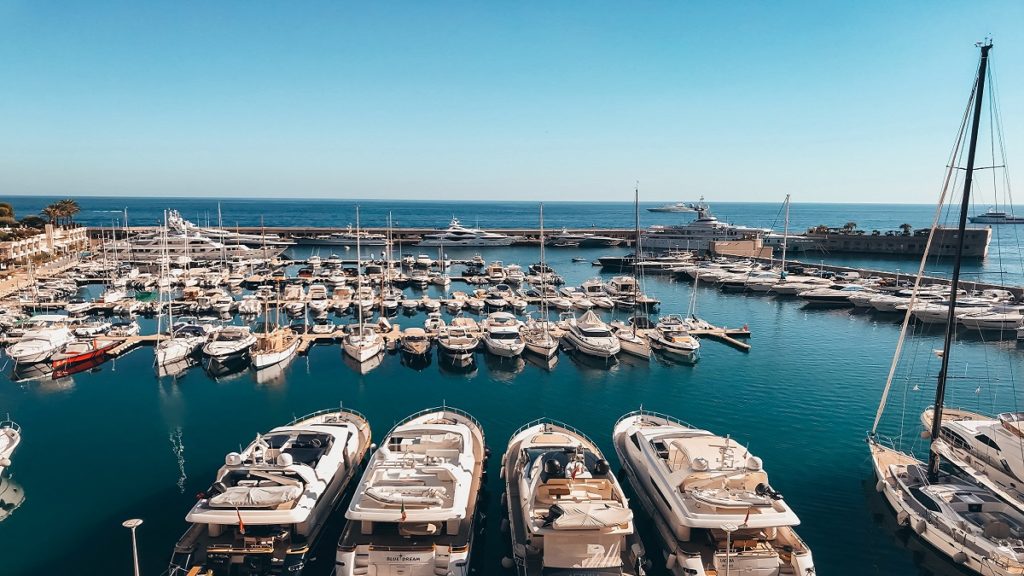
Departments are all organized in a hierarchy, with a department head reporting to the Captain. The clear chain of command makes for smooth operations, with all communications going up and down ranks. Junior staff will occasionally take instructions from other divisions as all crew is expected to help as needed. A captain or department head may organize staff differently, so reporting structures listed are guidelines only.
All salary ranges are monthly figures and are ranges based on yacht size and crew experience. Senior jobs on larger yachts have more responsibility than the same job title on yachts with smaller crews. Experienced crew are very desirable and can expect more pay for their positions.
Listed responsibilities are not exhaustive, and different yachts may allocate some jobs to different positions.
Read also: The yacht charter experience ladder
The Captain

The captain of the vessel is the overall decision maker for the yacht in all situations, including the safety of the vessel. The owner should leave the Captain responsible for operational decisions about hiring and staff and operating the ship. To become a captain requires years of experience and training, and a broad set of skills including yacht operations, personnel management, budgeting and finance. The captain works directly with the owner and owner’s representative, if the captain is not also acting as the representative.
On an organization chart, the Captain is usually placed in the deck division, but the Captain is always the senior-most crew on the yacht and all division heads report to the Captain.
Responsibilities include:
- Responsible for all navigation and running the yacht.
- Senior decision maker on all crew hiring.
- Manage repairs, refits, and yard work.
- Manage budgets and accounting. On larger yachts, this task ends more on the Purser, but the captain is always responsible.
- Ensure all paperwork, clearances, and legal requirements are completed.
- Primary contact with the owner or charter parties.
Reports to: The yacht owner
Salary Range: $6,000 to $22,000
The deckhands handle all the outside responsibilities of the ship, including cleaning and maintenance of the yacht and all the ship’s vessels and toys on board. Deck crew will have significant contact with passengers in this role, operating launches and delivering guests to and from shore and handling the toys.
All deck crew have watch responsibilities on passage, and daily responsibilities keeping the yacht pristine and clean. They will also do line handling and secure the yacht.
Deck department : Chief Mate/First Officer
The Chief Mate or First Officer is the second in command of the vessel, and left in charge when the Captain is not on board. The first mate has the requisite skills to stand in for the captain and run the yacht if needed and usually acts as the division head of the deck team.
The seamanship skills needed are similar to the Captain’s position.
- Primary safety officer for the yacht and all passengers and crew.
- Supervise and manage all operations on deck.
- Bridge watches on passage.
- Passage planning and navigation.
There may be additional mates on larger vessels, these 2nd, 3rd, etc. mates have similar responsibilities on rotation. But the first mate is senior and always second in command.
Reports to: Captain
Salary Range: $4,000 to $9,500 (First mate)
Second and more junior mates may earn $2,000 to $4,000
Deck department : Bosun
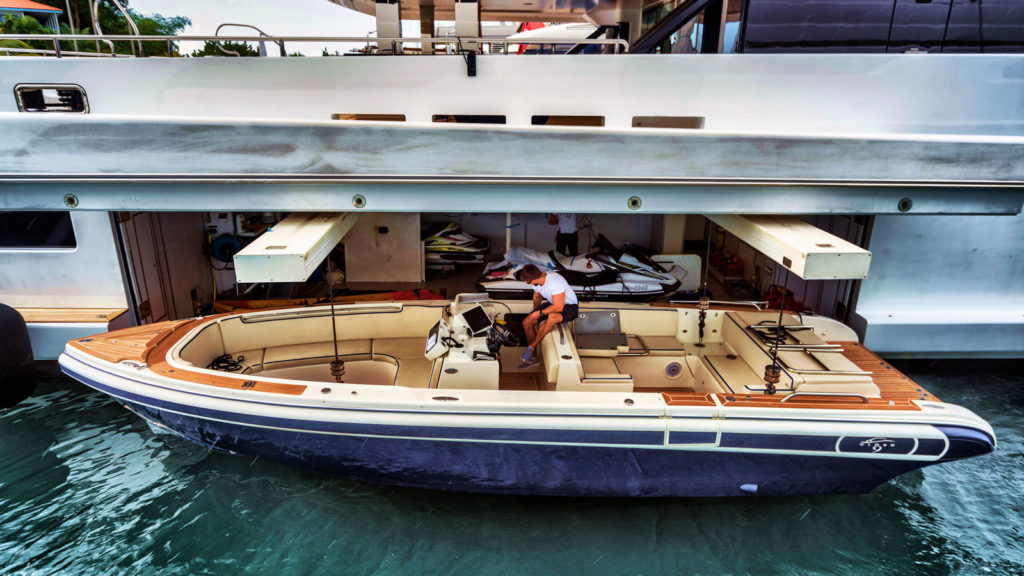
The Bosun is the senior deckhand and manages the junior hands on board. This will usually be the most experienced hand on board.
- Organizing all operations on deck.
- Coordinating the use, storing and launching of the ship’s boats, toys, and equipment.
- Managing the passerelle, watching passenger safety.
- Contact point for guest service on boats, toys, and trips to shore.
Reports to: First mate
Salary Range: $3,000 to $5,000
Deck department : Deckhands
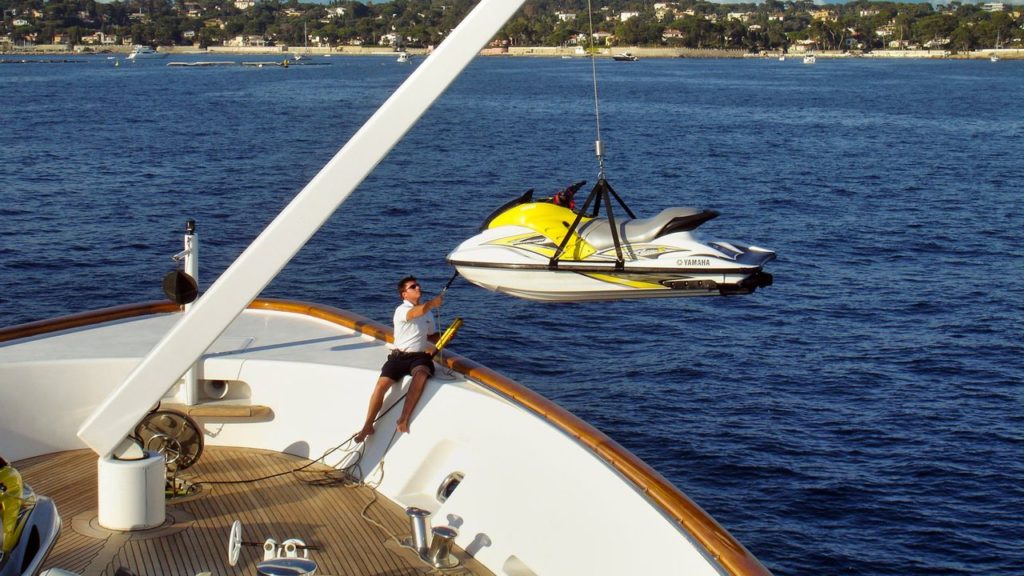
Deckhands are constantly busy with maintenance, cleaning, polishing, and assisting guests as needed. They will assist other departments as needed or given special duties.
- Daily cleaning of the yacht’s exterior.
- Painting, varnishing, polishing.
- Line handling.
- Launching and operating dinghies and tenders.
- Repairs and carpentry.
- Helping guests as needed – everything from handling baggage and gear to embarking and disembarking.
Reports to: Bosun
Salary range: $1,300 to $3,000
Though every position on a yacht is service-oriented, the interior or inside crew provides the primary customer service. They will interact the most with the passengers daily, and they’re directly responsible for the quality of their experience on board.
Interior department : the Purser
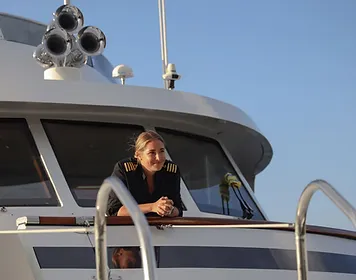
The purser is the chief financial officer of the yacht and handles all the financial operations on board. Accounting, purchasing, payroll and hiring, and all money matters end up with the Purser. This is a senior staff position, and may be the interior department head. Smaller yachts may eliminate the purser’s job and add it to the captain’s and other senior staff duties.
Responsibilities Include:
- Accounting and bookkeeping for all financial transactions.
- Human resources and payroll.
- Handling logistics for all departments related to purchasing.
- Managing contracts.
- Event coordination, including off yacht bookings and payments.
- Primary administration of the boat’s business paperwork.
- Inventory and supply management.
Salary Range: $4,000 to $8,000
Interior department : The Chief Steward/ess
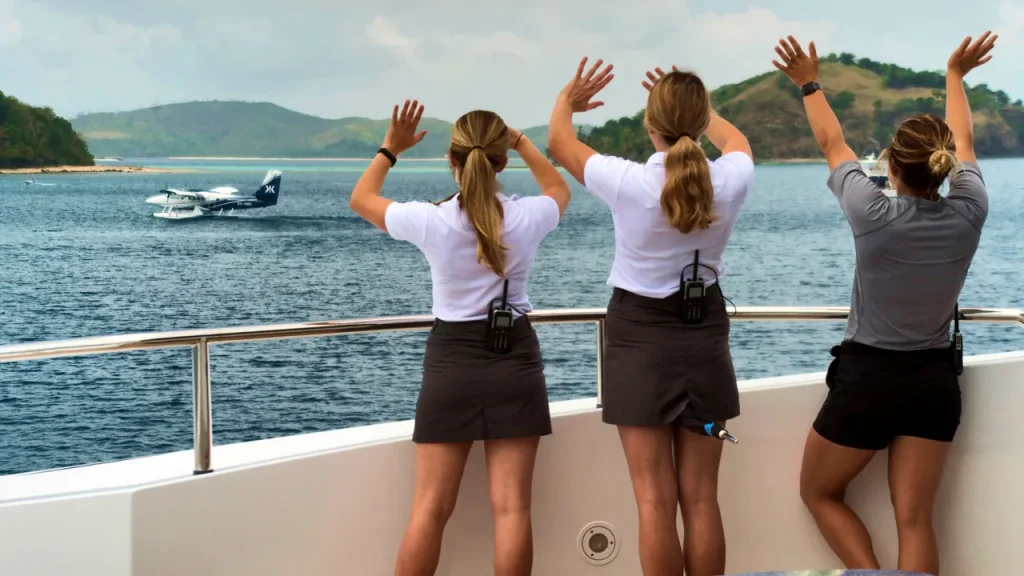
The chief steward or stewardess has primary responsibility for all service roles inside. Food and drink service, cabin preparation, and anything to do with helping the passengers be more comfortable and enjoy their stay. The chief steward will be inside crew with several years of experience.
The chief steward manages the interior staff, setting and enforcing vessel service standards. The chief steward ensures the crew delivers a five-star hospitality experience.
Chief Steward Responsibilities:
- Scheduling and training junior crew for meal and drink service and cabin preparation.
- Primary contact with guests for meals and drinks.
- Sommelier and wine service.
- Coordinate with the galley for meals and presentation.
- Decorate the interior, from flower arrangement to table settings.
- Arrange onshore activities and outings.
Reports to: Captain or Purser, depending on the yacht
Salary Range: $4,000 to $8,500
Stewards/Stewardesses
The stewards and stewardesses are the primary guest service staff. They will work closely with guests and passengers, and have daily contact with them as they meet most of their needs while on board.
Steward Responsibilities:
- Food and drink service.
- Room preparation and turndown service.
- Cleaning, polishing, housekeeping, and inside maintenance.
- Cabin detailing.
- Laundry, pressing, and folding.
- Help with outings, trips, debarkations.
Reports to: Chief Steward
Salary Range: $1,500 to $4,500
Housekeeping

Larger yachts may have a dedicated housekeeping and laundry staff. This will be part of the inside crew, under either the purser or the head steward. There may be a senior housekeeper, if there are more than one housekeeping crew on board.
Responsibilities are the cleaning and laundry portions of the steward’s job, and a laundry steward may spend most of her time inside the ship’s laundry.
An experienced Head of Housekeeping may earn from $4,500 to $7,000, while a Laundry Steward typically earns from $2,500 to $3,500.
Read also: CAN OWNING A YACHT TO CHARTER (REALLY) BE PROFITABLE?
Food service requirements on any yacht are high. Whether it’s a privately owned vessel or a charter, the expectations are always for top tier food service, with a variety of meals planned for the requirements of every passenger. Chefs and cooks prepare all meals on board for passengers and crew, but sometimes other interior crew may help with prep work or cleanup.
Smaller yachts have smaller galley crews, but the largest vessels may have an executive chef and several sous chefs. All chef positions require formal culinary training and experience, but cook positions are often entry level. Promotion from cook to chef is unusual without additional training.
Galley department : the Head / Executive Chef

On larger yachts, an Executive Chef will run the entire galley with the help of sous chefs and cooks. With an Executive Chef, there’s an expectation that the food and menus will be on a level with Michelin star-rated restaurants.
The executive chef brings a thorough understanding of food preparation and presentation, and moves food preparation past creative up to artistic. Job responsibilities are similar to a chef, but the job demands and the required experience and education are much higher.
Salary range: $7,000 to $11,000
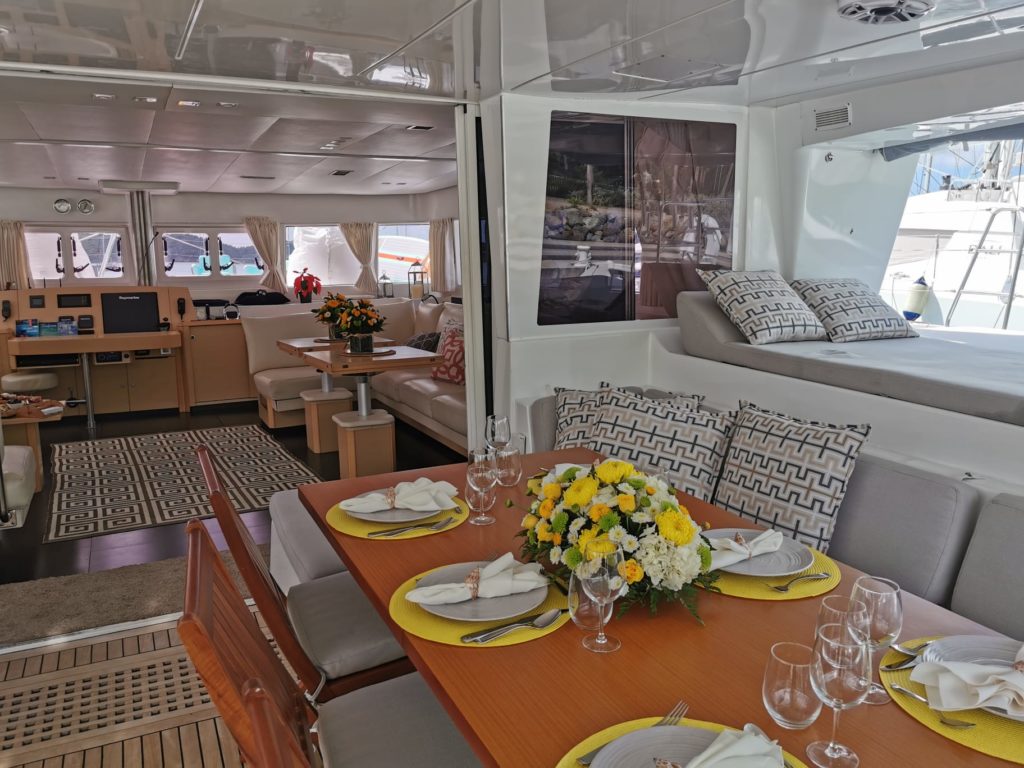
The chef has overall responsibility for all meals on the yacht, from provisioning in remote places to hygiene and good safety. If there’s only one chef, she’s the head of the galley crew. Finding the best provisions in far away locations and making the best of local food availability is a major part of the job.
- Planning a delicious and varied menu for passengers.
- Sourcing all food and arranging transport to the yacht.
- Maintaining and operating within the galley budget.
- Preparing passenger meals with professional presentation and style.
- Cleaning and maintaining galley and galley equipment.
- Deliver menus and meals on time, while running an organized and spotless galley.
Galley department : Sous Chef
The sous chefs assist the chef in all aspects of running the galley, and may have independent assignments to plan and guest and crew meals. While not primarily responsible for provisioning, the sous chef will help with food selection, menu preparation, and planning. A sous chef must have formal culinary training.
Reports to: Head chef
Salary Range: $3,500 – $6,000.

Galley department : The Cook
Cooks may be entry-level positions or experienced, but do not require formal gastronomy education. They will assist the chef and sous chefs, cooking meals and dishes for guests and crew, helping with provisioning, and keeping the galley neat.
- Assist with provisioning and buying high-quality food from local sources.
- Follow all food handling and safety guidelines.
- Assist the head chef as needed, taking direction and guidance.
- Prepare guest and crew meals as required.
- Staying on top of galley inventories and supplies.
Salary Range: $2,500 to $3,500
Engineering

The engineering department keeps the yacht and all its systems working. Whether it’s the engines, electronics, air conditioning, or the plumbing – it’s up to engineering to keep it running.
There is considerable overlap with commercial shipping in the engineering field, as many of the same skills apply. And there is a broader range of qualifications and grades based on the size and power of the vessel. Job ratings may be set by required experience based on tonnage of ship or power of engines, with corresponding levels of pay and responsibility.
Unlike commercial shipping, engineers may get involved in other aspects of running the yacht, like helping with docking and water sports with mechanical toys.
Engineering certifications, training, ratings, experience and licensing are critical to hiring competent engineers, and for engineering crew it’s an important facet of career advancement. This is important for Chief and 2nd Engineers, which are often broken out by MCA (U.K. Maritime and Coastguard Agency) rating or other international equivalent.
MCA ratings for engineers Commercial and Private Yachts over 24m are:
Y4: Less than 200 Gross Tons and less than 1,500 kW engine power Y3: Less than 500 GT and 3,000 kW Y2: Less than 3,000 GT and 3,000 kW Y1: Less than 3,000 GT and 9,000 kW
There is also an unlimited rating for merchant vessels larger than the Y1 category. For discussing salary and responsibilities, we will include all ratings in one position description, but pay scales with the size of the yacht and any required higher ratings.
Chief Engineer
The chief engineer manages all aspects of keeping the yacht and its systems running. The chief engineer manages all the engineering staff, and directs all maintenance, repairs, troubleshooting and upgrades. This is a management position, but requires extensive hands-on technical experience and knowledge. Chief engineers on large yachts hold an MCA Y1 or Y2, smaller boats will have a lower rated chief and a smaller staff. Check Jooble.org to find abroad marine engineer vacancies.
- Provisioning, shopping, and stocking.
- Preparing passenger and crew meals.
- Following instructions and cooking under the direction of others.
- Galley cleaning.
- Follow food safety and storage procedures.
- Food pre-preparation.
Salary Range: $6,000 to $15,000
2nd Engineer
The second engineer is also a highly skilled position requiring a rating or license and several years of experience. This senior level engineer also needs knowledge of how to troubleshoot and maintain all yacht systems.
- Maintain and manage all engineering operations.
- Hire, train and supervise all engineers.
- Project manage all upgrades and retrofits, including managing budgets, contracts, and suppliers.
- Coordinate maintenance schedule for the entire yacht around the usage and seasonal schedules.
- Maintain costs and accounting for engineering operations.
- Design and handle all safety operations.
- Set and maintain standards for operations and cleanliness in the engine room.
Reports to: Chief engineer
Salary Range: $5,500 – $10,000
OOW (Officer of the Watch) Engineer
The OOW is a junior engineering position, but still licensed. There are two categories of OOW – MEOL (Marine Engine Operator License) and the more junior AEC (Assistant Engine Course). The overall responsibilities are similar, working to support the senior engineers and handle independent assignments. The AEC rating is entry level for licensed crew, but has training and certification.
- Support the chief in all projects.
- Maintain a clean, safe engine room.
- Perform all maintenance, troubleshooting and repair tasks as needed.
- Support motorized water sports.
- Occasionally assist with other vessel operations, like line handling.
Reports to: Chief Engineer
Salary Range, MEOL: $4,500 to $6,000 Salary Range, AEC: $2,500 to $3,500
Electronics/Technology Officer (ETO)
The ETO takes responsibility for all audio-visual and information technology on board. Ensuring passengers have access to the internet, movies, television, and music is a primary responsibility. This position carries a fair amount of passenger interaction, and an ETO needs good troubleshooting skills to go with customer service skills.
- Ensure all audio/visual and entertainment systems are always available for passengers.
- Assist passengers with personal technology and ship systems as needed.
- Conduct regular maintenance and upgrades of the network, information, and A/V systems around passenger schedules.
- Assist other engineers as needed, especially with electronic systems.
- Contribute as needed with other departments for boat and passenger operations.
Salary Range: $4,000 to $9,000
Junior Engineer
This is a lower or entry level position for someone with engineering skills but without formal licensing or certification. The junior engineer will help with safety and cleanliness, and assist in any engineering tasks as needed. The ability to solve problems and fix things opens this spot for anyone capable and willing to do the job.
- Help with cleaning, maintenance, and safety functions.
- Help anywhere needed on the yacht.
- Assist senior engineers as needed, taking direction and following instructions exactly.
- Constantly develop skills.
Read also: IS BUYING A BOAT A BAD IDEA?
Whether you are a yacht owner or considering entering this dynamic industry with an established and reliable crew, it is essential to have an understanding of the yacht’s hierarchical structure, mission priorities, and salary expectations. By doing your research on the complexity of yachting before hiring your team, you can confidently select the right group of experienced and qualified professionals for your needs. Staying up-to-date on top industry trends and knowing the capabilities of each type of yacht crew position will enable you to make sound decisions that support a safe and cost-effective journey. With quality personnel at your helm, you can cruise unhindered in luxury and explore new destinations with peace of mind.
Fractional Yacht Ownership : Everything you Need to Know
What is the best country to register your yacht offshore, you might also like.

What differentiates a yacht from a superyacht or a mega yacht?
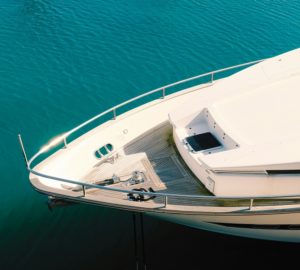
Chartering Requirements and Regulations: A Guide for Boat Owners

What are the Fastest Cruising Catamaran on the Market?
- USA +1 954 892 5009
- UK +44 (0)20 7193 5450

- Crewed Yachts
- Destinations
Yachting and Boating Glossary of Terms
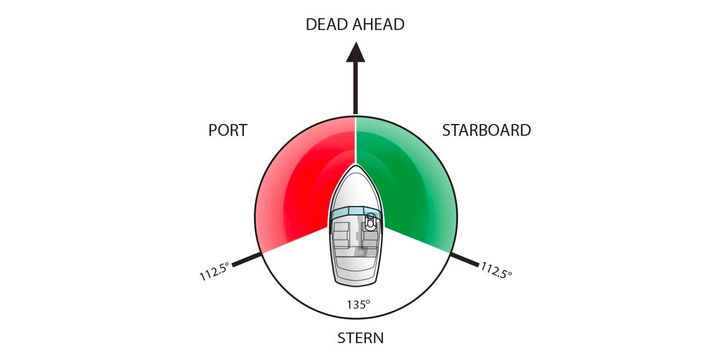
Which side is "Starboard"? Important yachting and boating terms, all in one place!
The yachting world is full of nicknames and jargon - it can be hard to understand some of the technical language used. Scroll down to read through some of the most popular sailing terms and what they mean!
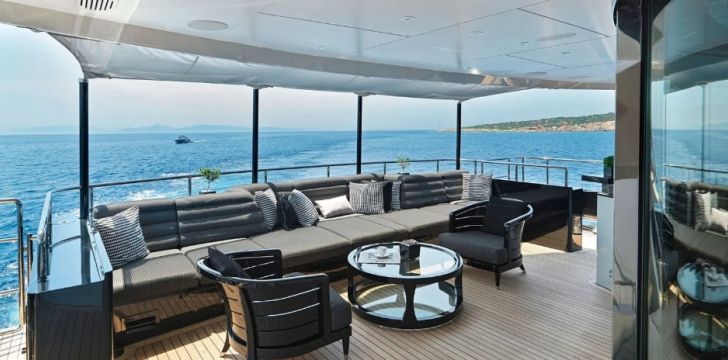
Aft deck . On motor yachts, the guest area closest to the back of the boat on the main level. Often the location of the main outdoor dining area. Aft cabin . Sleeping quarters beneath the aft or rear section of the boat (sometimes called a mid cabin when located beneath the helm) Alee . The side of a boat or object away from the direction of the wind. Aloft . Above deck in the rigging or mast. Amidships . In the center of the yacht Anti-fouling paint . A special paint applied to a boat's hull to prevent marine growth. APA . Advance Provisioning Allowance. The APA is money paid to a bank account for the Captain of the yacht to provision on the charterer’s behalf. Key provisioning is fuel, food, drinks, and port fees. The Captain is obligated to keep all receipts and balance the account for the charterer. At the end of the charter, the Captain provides a full account of expenditures, and any amounts not used will be refunded. Apparent wind . The direction and speed of the wind as felt in a moving boat - the way it 'appears”. Astern . The direction toward or beyond the back of the boat (stern). Athwartships . Perpendicular to the yacht’s centerline. An 'athwartships berth,” means the bed is parallel to the yacht’s sides instead of to its bow and stern. This can create uncomfortable motion while you sleep. Aweigh . An anchor that is off the bottom. Antigua. North of Guadeloupe , a popular bareboating destination. Anguilla. An exclusive destination in the Caribbean.
Enquire Now!

Backstay . Support for the mast to keep it from falling forward. Banyan. A short period of rest, often a day or so, while on a charter Bareboat . A yacht that you charter and run yourself, without a crew. See our Bareboat Page . Base charter rate . The rate the charterer pays on a charter for the yacht and crew. The base rate does not typically include provisioning or other expenses such as food, fuel, dockage and tip. Beam . Measurement of a boat at its widest point. Also, a transmitted radio, sonar or radar signal. Bearing . Direction to an object from your current position. Bear off . To turn away from the wind. Beating . Sailing upwind. Berth . 1 - A cabin or other place to sleep aboard a boat. 2 - A boat slip at a dock where the boat can be moored. Bermuda Triangle . A section of the North Atlantic Ocean off North America in which more than 50 ships and 20 airplanes are said to have mysteriously disappeared. Bermuda . A British island territory in the North Atlantic Ocean known for its pink-sand beaches such as Elbow Beach and Horseshoe Bay. Bimini . A sun shade or rain cover that covers a portion of a yacht or boat. Blue Peter. A blue/white flag that indicates the yacht is ready to sail Bow . Forward portion/front of a boat. Bowline. The most popular, and essential knot. It has many uses, and is easily 'broken' even when pulled tight. Buoy (normally pronounced "boowie”, but sometimes "boy”). An anchored floating object that serves as a navigation aid or hazard warning. BVI . The British Virgin Islands . A major sailing and yachting area in the Caribbean, near the US Virgin Islands and Puerto Rico .
Bareboats!
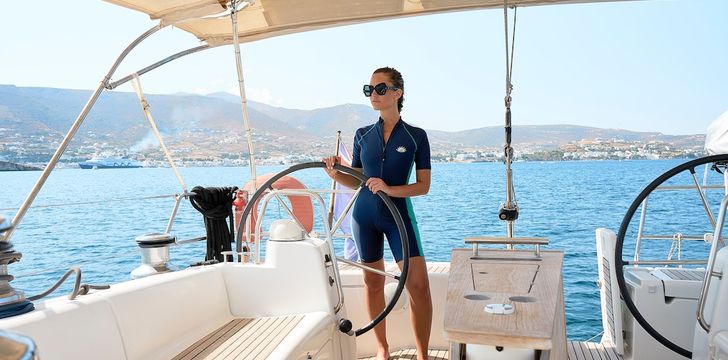
Captain-only charter . A yacht that comes with a captain but no additional crew. The captain drives the yacht, and you take care of everything else, including cooking and housekeeping. Often called Bareboat with Skipper Charter yacht broker . A person who specializes in booking personalized yacht vacations on behalf of clients. Also, the firm that person works for, as in Charter Yacht Broker Agency . See our article on why you should use a Charter broker . Charter terms . The contract under which you charter a yacht. There are different terms used in different parts of the world. Some give you everything on an all-inclusive basis, some give you all meals aboard, some give you no meals aboard, and so forth. Charter yacht . A yacht that is available for charter/rental. Cockpit . The outdoor area of a sailing yacht (typically in the stern) where guests sit and eat, and from where the captain may steer and control the boat. Commission . The fee a yacht’s owner pays to a charter broker for booking a charter. Note - the charterer does not pay the charter broker’s commission directly. Crew . The team that operates your charter yacht. The crew can include a captain plus any combination of: mate, deckhand, stewardess, engineer and chef. Some crew has additional skills such as wellness/massage therapy and scuba instruction . Crewed charter . The charter of a yacht that has a permanent crew aboard who run and manage all aspects of the yacht and charter. See more about Crewed Charter . CYBA . Charter Yacht Broker Association, one of the primary professional organizations for reputable charter brokers. Corsica. A French island north of Sardinia. Cuba . Cuba, officially the Republic of Cuba , is a country comprising the island of Cuba as well as Isla de la Juventud and several minor archipelagos located in the Caribbean sea .
Crewed Motor Yachts!
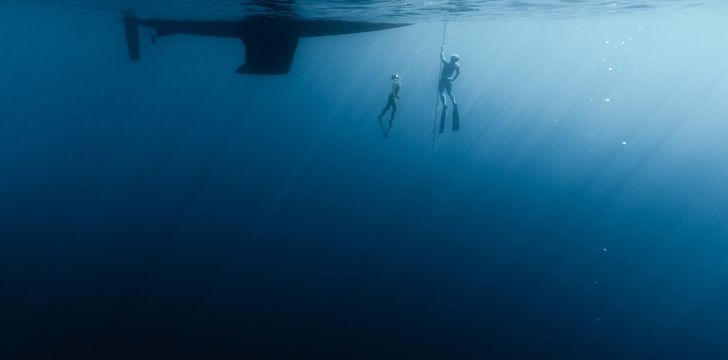
Dead Ahead. Right in front, just ahead. The direction you are sailing/cruising. Dinghy . A small boat that a yacht carries or tows. Used for transfers to and from shore, and short day cruises and, if powerful enough, water sports. Also typically called a tender on larger yachts. Displacement . The weight of water displaced by a hull. Also, a type of hull that smoothly displaces (pushes aside) water as opposed to tipping up and riding on top of it. Dodecanese . The Dodecanese islands located in the southeastern Aegean Sea, are a group of Greek islands known for their medieval castles, beaches and ancient archaeological sites. Double cabin . A charter yacht cabin that includes a double bed to sleep two guests. Not to be confused with "twin cabin," which means a cabin with two twin-size beds. Draft . The depth of a yacht below the waterline, as measured vertically. It is important when navigating shallow water to assure the boat can pass.
Destinations!

e-boat . A boat or yacht powered entirely by electricity (no diesel motor or generator). See more on our Electric Boat Revolution page. Ease . To slacken (loosen) a rope/line. Eco . 1) the spoken term for the letter "E" 2) short for Ecological, eg. good for the environment. Eddy water . Area of calm sea. Electric generator. Equipment that burns fuel to provide electricity aboard when there are no electrical connections or sources.

Fathom . Depth measurement equaling six feet. Fethiye . Fethiye is a port on Turkey's southwestern Turquoise Coast First Mate . The second in command on the yacht Fleet . A group of yachts that are under management by the same company, called a fleet manager or CA. Flank . The maximum speed of a ship Flotilla . A group of yachts cruising together. Flying bridge (or Flybridge). A raised, second-story helm station (steering area) that often also has room for passengers, providing views and a sun deck. Furling . Rolling or folding a sail on its boom. Many charter yachts today are 'self-furling” which takes much of the work out of dropping the sails. French Riviera. A stretch of coastline in the southern part of France. The 'Riviera' doesn't have an official boundary, however, most locals say that from Toulon to the Italian border is considered the 'French Riviera'.
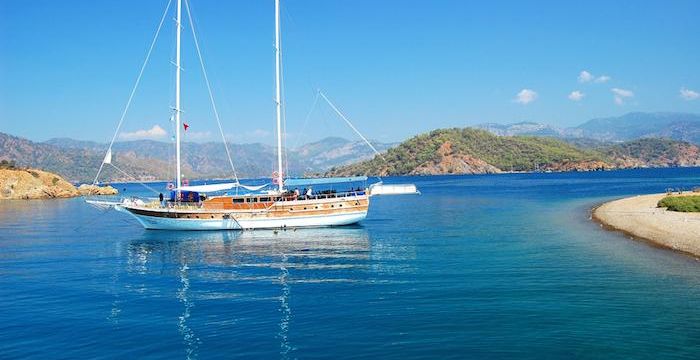
Galley . The kitchen/cooking area on a yacht. Gulet . A type of motorsailer typically found in Turkey. Gulets originated from sponge boats, but now offer luxury crewed charters, normally with en-suite bathrooms, large deck space, and full service. See more about Gulet Charters . Gunwale (Gun-ul). The upper edge of the side of a boat. Gybe . Also spelled jibe. To change the course of a boat by swinging a fore-and-aft sail across a following wind (eg the wind is blowing from behind the boat). Gocek. A popular bareboating sailing destination in Turkey. Gulf. Is a sizable amount of the ocean that penetrates the land. See 'Mexican Gulf'.

Halyard . Line (rope) used to hoist a sail. Harbour. An area designated for yachts to moor. Harbor fees . Charges paid by the yacht, and normally passed on to the charterer, for docking in certain harbors around the world. The rate depends very much on the season and attractiveness of the port. Harbormaster . The person at a harbor in charge of anchorages, berths and harbor traffic. Head . Toilet room. Heel . To temporarily tip or lean to one side. Monohulls heel more than catamarans. Helm . The steering wheel of the boat or yacht Hull . The structural body of the boat that rests in the water and is built to float.
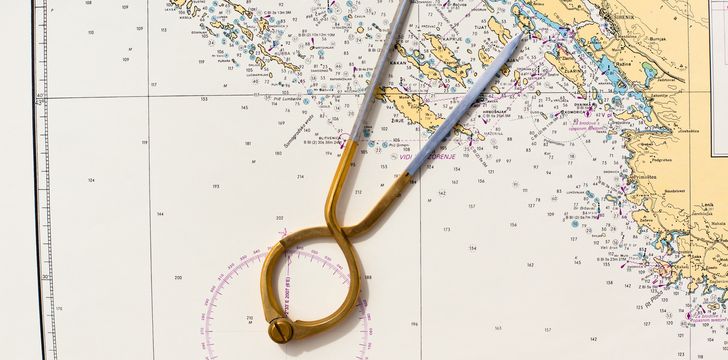
'Inclusive” charter rate . The cost of a charter that includes nearly all expenses, including the yacht and crew, food, alcohol (within reason), fuel and dockage. Itinerary . The course a yacht intends to travel while on charter. The itinerary is normally planned in advance but should remain flexible depending on weather conditions and guest preferences. Idle. When the engines run on 'idle' this means the yacht is just ticking over. Often referred to in fuel rates "Rates include fuel with engines at idle" In Irons. A sailing word to describe a yacht losing her forward momentum when heading into the wind. The yacht becomes untearable as she loses her way. Ischia. Ischia is a volcanic island in the Gulf of Naples , Italy, known for its mineral-rich thermal waters. Inboard. When the engine is IN the yacht, as opposed to being attached to the stern - this would be called an OUTboard. Inshore. Close or near the shoreline so line-of-sight sailing is possible. Iron wind. Sailor's nickname to the engine.
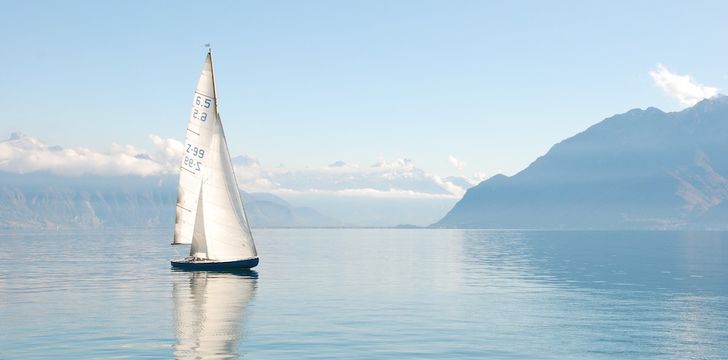
Jib . Triangular sail projecting ahead of the mast. Jibe . See gybe Jackeline's. Lines that run from Aft > forward that your harness can be attached to in bad weather. Jury rig (jerry-rig). A temporary fix to something which has broken on the yacht.
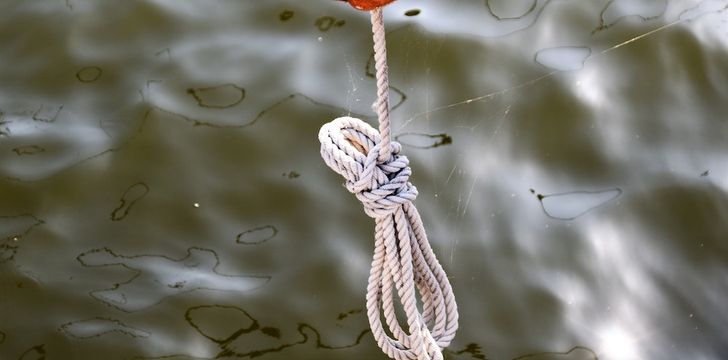
Knot . A unit of speed equivalent to one nautical mile per hour. "We are cruising at 6 knots". See nautical mile. Kedge. A small anchor that can be thrown overboard to either change the direction of the yacht (pivot point) or to help anchor the yacht further in bad weather. Often used then yachts "raft up". Ketch. A two-masted yacht. Kicking strap. A name to the line that pulls the boom down to flatten the sail.
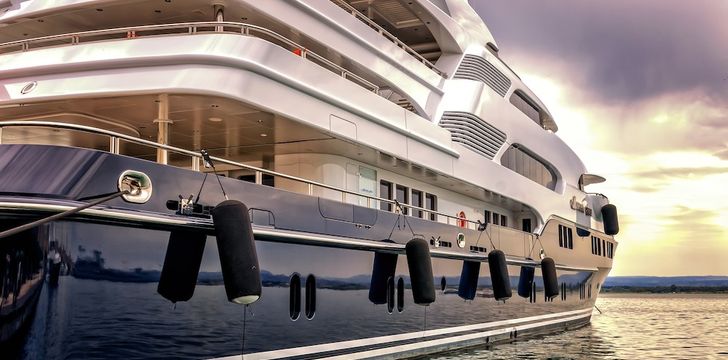
Lee . The side furthest away from the wind. Leeward . The side of an object that is sheltered from the wind. Often pronounced "loo ərd". Lee helm. In strong winds, the yacht can have a tendency to move to the lee without the rudder moving position. LOA - Length Over All. The length of a charter yacht as measured from 'stem to stern”. This is important because yachts are usually charged a price by the foot for dockage at marinas. Luxury Yacht - a crewed charter yacht the strives to provide 5-star service to its charterers including cuisine, water sports, housekeeping, and navigation. See our Luxury Yacht Charter Page. Lazy jack. A sail bag attached to the boom where the mainsail can fall into. Leech. The aft part of the sail. Luff. The forward part of the sail. Luffing up. Bringing the yacht into wind - moving the luff of the sail (the forward part of the sail called 'the luff' moves into the wind).
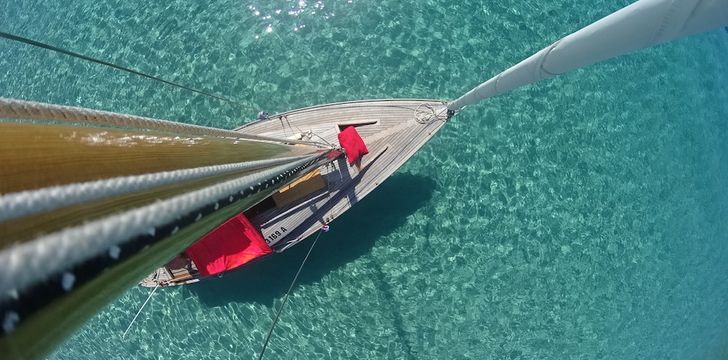
Mainsail . The largest regular sail on a sailboat. Main salon . the primary indoor guest area on a yacht’s main deck. Make fast . To secure a line. Marina . A place where yachts dock and receive services such as provisioning, water and fuel. Typically marinas offer protection from bad weather, and have hundreds of slips for yachts of various sizes. Slips are rented long term or by the day. Mast . Vertical spar that supports sails. Master cabin . Typically the best/largest cabin onboard any charter yacht. Megayacht . A large, luxury motoryacht. No hard and fast definition, but normally crewed luxury yachts 100 feet or longer. Similar to Superyacht. Midships . Location near the center of a boat. Monohull . A yacht with one hull, as opposed to a multihull or catamaran that has pontoons. While most motor yachts are monohulls, the term typically refers to sailing yachts. Motorsailor . A yacht built to sail and cruise under power with equal efficiencies, such as a Gulet. They typically look like sailing yachts, but have strong engines and are often skippered like they are motor yachts. Motoryacht . A yacht whose primary form of propulsion is engines. Multihull . A yacht with more than one hull - typically a catamaran (two) or trimaran (three). They can be either powerboats or sailboats. MYBA - The Worldwide Yachting Association - originally the Mediterranean Yacht Brokers Association (pronounced 'Mee ba”). An international yacht brokers' association based in the Mediterranean, one of the primary professional organizations for reputable charter brokers. MYBA Contract . A contract used for luxury yachts, that has become the standard in the Mediterranean and many other parts of the world. Offers protections for charterers in case of cancellation and clearly states the legal rights of all parties to the charter.

Nautical mile . A distance of 6,076.12 feet or 1,852 meters, which is about 15 percent longer than a statute mile. Equivalent to one minute of latitude on a navigation chart. See our Charter Distance and Cost Calculator here . Navigation. All activities that produce a path Nautical. Anything relating to the sea or yachts. Narrows. A narrow part of a navigable waterway. Nautical chart. 'Maps' designed specifically for sea navigation. Nun. Navigational, cone-shaped buoy (in IALA A = port in IALA B = starboard)

Outboard . An engine that is outside the boat (normally attached to the stern), as is commonly seen on tenders, dinghies, and smaller speed boats. Owner-operator . A person who owns and skippers a charter yacht, instead of hiring a captain to perform charters for guests.

Painter. The rope used to tie the dinghy or tender up to the boat. Passarelle . The passageway you walk on from the dock to the yacht. Often incorrectly called a gangplank. Personal flotation device (PFD). A safety vest or jacket capable of keeping an individual afloat. Pitch . The theoretical distance a propeller would travel in one revolution. Also, the rising and falling motion of a boat's bow and stern. Planing hull . A boat hull designed to ride on top of the water rather than plowing through it. Port (direction). The left side of a boat when facing the bow. Signified by Red. The opposite side from Starboard. Trick to remember - 'After a party, there’s no red port left'. Port (place). A marina harbor or commercial dock for boats. Port (drink). A strong, sweet, typically dark red fortified wine, originally from Portugal. (Well not exactly a nautical term, but lots of yachties like a good port after dinner!) Power catamaran . A multihulled powerboat with two identical side-by-side hulls. Characterized by excellent fuel mileage and less rolling in the water than a monohull powerboat. Power cruiser . A motor yacht with overnight accommodations, typically up to 40 feet long. Preference sheet . A questionnaire that guests fill out before a crewed charter. It alerts the crew to allergies and medical conditions, as well as to preferences for types of food, wine and service. As such, it is an invaluable document for the crew to plan the charter and assists greatly in customer satisfaction. Private yacht . A yacht that is not available for charter. Provisioning sheet . A questionnaire that guests fill out before a bareboat charter. It tells the management company what foods and other supplies you want to have to wait for you when you arrive for your vacation. It’s not mandatory, as many bareboaters prefer to provision themselves when they arrive. Pullman berth . A twin-size bed that is atop another bed, in bunk-bed fashion, that adds additional sleeping accommodation to the yacht. It often 'pulls” out of the wall when needed. Pump toilet . A marine toilet that requires the user to pump a handle to flush.

Reach . To sail across the wind. Regatta . A boat race, often with classic yachts. See more on our regatta charter guide . RIB (acronym for Rigid Inflatable Boat). An inflatable boat fitted with a rigid bottom often used as a dinghy or tender. They are great for shallow water and landing on sandy beaches. Rope . A cord used to moor or control a yacht. Note: experienced sailors always refer to ropes as lines. Runabout . A kind of small, lightweight, freshwater pleasurecraft intended for day use.

Sailing yacht . A yacht whose primary method of propulsion is sailing. Nearly all sailing yachts have engines in addition to their sails. Sedan cruiser . A type of large boat equipped with a salon and a raised helm or bridge. Semi-displacement hull . A hull shape with soft chines or a rounded bottom that enables the boat to achieve minimal planing characteristics (see Planing hull). This increases the top potential speed of the yacht. Schooner . A large sailboat with two or more masts where the foremast is shorter than aft mainmast. Skippered bareboat . A bareboat that has been chartered with a skipper, but no other crew. The skipper’s responsibility is navigating the boat and assuring the safety and wellbeing of the charterer. The skipper may cook and provision, but this is not a requirement. Also known as a captain-only charter or skipper-only charter. Sky lounge . The indoor guest area on the bridge deck of a luxury motor yacht. Often less formal than the main saloon, and sometimes ideal for cocktail parties, happy hour or children’s activities, especially if the weather is not perfect. Starboard . The right side of a boat when facing the bow. Opposite of Port. Stabilizers . A feature that helps to prevent a Motoryacht from rolling too drastically, especially in bad weather, greatly improving the comfort of the guests. The most advanced form is a zero-speed stabilizer, which works both underway and at anchor. Stem . The most forward section of the hull. Stern . Aft (back) portion of a boat. Swim platform . The space at the back of the yacht from which you typically can go swimming or board a dinghy. Lately, these have become entire pool/beach areas on some of the larger luxury yachts.

Tack (sail). The lower corner of a sail. Tack (sailing). Each leg of a zigzag course typically used to sail upwind. Tandem charter . A charter that includes more than one yacht. Tender . A boat that a yacht carries or tows used for transfers to and from shore, and short day cruises and watersports. Also sometimes called a dinghy. Transom . The rear section of the hull connecting the two sides. True wind . The direction and velocity of wind as measured on land, distinct from apparent wind which is how it appears on a moving yacht. Twin cabin . A yacht cabin that features two twin beds, often best suited for children or friends.

V-berth . A bed or berth located in the bow that has a V-shape. VAT . Value-added tax (TVA in France). A tax sometimes charged to charter guests who book boats in certain nations, most often in Europe. VAT can add 20 percent or more to your bill. Very happy . The state that most charterers are in the majority of the time they are aboard their yacht! VHF . Very high frequency; a bandwidth designation commonly used by marine radios. VICL . Virgin Islands Charter League, an organized group of charter yacht owners in the U.S. Virgin Islands. Membership in this group indicates a yacht owner’s willingness to be part of the larger charter community and to follow its standards. VIP cabin . Typically the second-best cabin onboard any charter yacht.

Waterline . The intersection of the hull and the surface of the water. Waypoint . The coordinates of a specific location. Weigh . To raise the anchor. Windlass . Rotating drum device used for hauling line or chain to raise and lower an anchor. Windward . The side of a boat or object that is facing or being hit by the wind - the windy side. Windward Islands . The Windward Islands are the southern, generally larger islands of the Lesser Antilles, within the West Indies Wet head . A bathroom that serves as both the toilet/sink area and the shower compartment, meaning the sink and toilet get wet when you use the showerhead.
Yacht . A sailing or motor yacht designed for pleasure boating that typically ranges from 40 to 100+ feet long. Yachting . The experience of being on a yacht. Yaw . To veer off course.
Zero-speed stabilizers . The most sophisticated type of motor yacht stabilizers that keep the yacht from rolling both underway and at anchor, significantly improving their comfort.
Contact us if you have questions about yachting or chartering!
We’d love to contact you by email from time to time about yachts and destinations we think will be of interest to you. Do tick this box if you are happy for us to do so. The unsubscribe link is at the bottom of all our marketing emails if you change your mind.
We'd love to contact you by email about yachts, destinations and offers. Do tick this box if you are happy for us to do so.

No Obligation Travel Itinerary

Bali 5.4 - 5 + 2 Cabins

Lagoon 50 - 6 + 1 Cabins

MIREDO - Maiora 24S

LADY VOLANTIS

3 SISTERS - Fountaine Pajot Lucia 40
Chartering Information
Why Charter a Yacht?
Yacht Charter Basics
Charter and Rental Pricing and Boat Affordability for 2024 and 2025
Yacht Charter Fees and Insurance
Frequently Asked Charter Questions - Yacht Charter FAQ
Charter distance and cost calculator!!
About Boatbookings
Why Charter With Boatbookings?
Yacht Charter Insurance
Crewed Yacht Charter Checklist
The Yacht Charter Experience - Getting the most from your boat rental
Boat Rentals Guide - how to Rent a Boat for a Charter Holiday Vacation
Browse All Articles

Our most popular charter regions
- Caribbean Sea Charter Yachts
- Mediterranean Sea Charter Yachts
- Pacific Ocean Charter Yachts
- Thailand and Indian Ocean Charter Yachts
- Virgin Islands Yacht Charter
- Bahamas Yacht Charter
- Seychelles Yacht Charter
- Where We Charter
Several of the key worldwide chartering events of the year.
- Corporate Yacht Charter
- Event Yacht Charter
- Cannes Film Festival Yacht Charter
- Monaco Grand Prix Yacht Charter
- Charter Events in Cannes
- Weddings and Honeymoon Yacht Charters
- Family Charters with Children
- List your Charter Yacht on Boatbookings
Our International Specialized Sites
- Stunning Yachts Charter
- Boating News and Blog
- Boat Itineraries
- France location de bateaux
- Boten Verhuur, Boot Charter
- Boot Charter/Location de Bateaux
- Alquiler de Embarcaciones
- Turkiye Yat Kiralama

Rating: 4.9 / 5 calculated on 1343 reviews
- London +44 (0)20 7193 5450
- French Riviera +33 (0)9 70 46 39 79
- Ft Lauderdale +1 954 892 5009
General Email Contact: [email protected]
- © Copyright 2024 Boatbookings
- T's and C's
- Useful links
- Testimonials
- © Copyright 2024 Boatbookings | T's and C's | FAQ |
This website uses cookies --- I understand and accept

Yacht Crew Positions and Salaries
The organisational structure onboard a superyacht follows a strong hierarchy based upon a military model. Exact job duties and lines of authority are set and strictly adhered to. This hierarchy is followed on the vast majority of yachts; however, responsibilities of the crew on smaller yachts are often merged.
There are four departments on yachts with clear organisational structure:
- Deck (including Bridge) – Safety, passage delivery, maintenance of the yacht's exterior, guest outdoor activities
- Engineering – Safety and smooth operational running of the yacht
- Interior – Housekeeping, guest wellbeing, activities, accounting
- Galley – Food preparation, stock control, hygiene, galley maintenance
The top of the hierarchy on each yacht is the Captain , who reports to the yacht owner either directly, or through a representative or a yacht management company.
Salaries vary and depend on the yacht size, use, type and location, as well as the experience and qualification of the crew member. We included typical salaries of crew based on the data available from reputable industry sources, as well as our research of over 60,000 crew registered with us.
Deck Positions
The primary duty of the Captain is the overall safe manning and operation of the yacht. Yacht Captain is responsible for the vessel, yacht crew, owner and guests, including personnel management, shipyard/project management, legal and regulatory compliance, accounting, achieving owners' objectives, and answers to the owner regarding all decisions.
| Captain | €4,000 - €15,000 |
First Mate / Chief Officer
The First Mate or Chief Officer is the right hand of the Captain. Takes command of the yacht from Captain when required. Shares Captain's responsibilities as required.
| Chief Officer | €3,000 - €13,500 |
| 2nd Officer | €3,000 - €8,000 |
| 3rd Officer | €2,500 - €6,000 |
| Security Officer | €3,000 - €5,000 |
Bosun / Lead Deckhand
Bosuns are usually experienced Deckhands with additional responsibilities. They are in charge of Deckhands onboard the yacht and often spend a lot of time with guests during outdoor activities. The Bosun is normally the main tender driver.
| Mate | €2,500 - €6,000 |
| Bosun | €2,500 - €5,500 |
| Lead Deckhand | €2,500 - €5,000 |
Responsible for the maintenance of the exterior of the yacht and keeping it in pristine condition at all times. Deckhands also assist in maintaining, cleaning and operating yacht's tenders.
| Junior Deckhand | €2,000 - €3,000 |
| Carpenter | €3,000 - €4,000 |
Engineering Positions
Chief engineer.
Responsible for the Engineering Department and for all technical aspects of the boat and its equipment. The Chief Engineer's duties include overseeing all mechanical and electrical operations, ensuring all planned maintenance takes place and liaising with subcontractors.
| Chief Engineer | €5,000 - €15,000 |
Second / Third Engineer
The Second and Third Engineers report directly to the Chief Engineer. They assist in maintaining all mechanical and electrical operations of the yacht.
| 2nd Engineer | €3,000 - €10,000 |
| 3rd Engineer | €2,500 - €6,500 |
| Sole Engineer | €3,500 - €12,000 |
| Motorman | €2,500 - €4,000 |
ETO / AV/IT Officer
Electro-Technical Officer (ETO) and AV/IT Officer are in charge of daily maintenance of all electronic, computer, audio/visual and communications equipment and their efficient operation. This includes the radio, radar, telephones, satellite communications, navigation systems, computers, Internet connection, interior equipment (TVs, sound systems), etc.
| ETO | €4,000 - €8,000 |
| AV/IT Officer | €4,000 - €7,000 |
Electrician
The Electrician is responsible for maintenance of all electrical circuits onboard the vessel, circuit breakers, switches, lighting, batteries, etc.
| Electrician | €4,000 - €6,500 |
This is an administrative position on large yachts. The Purser is responsible for all operations in the interior department, including inventory, purchasing, provisioning, accounting, organising guest activities, and assisting the Captain with the yachts paperwork.
| Purser | €5,000 - €9,000 |
Chief Steward(ess)
Duties are similar to those of other Steward(ess)es onboard the boat, but on a more senior level, including managing the interior department and training. Small yachts with less crew do not have a Purser. The Chief Steward(ess) is in charge of all the responsibilities normally carried out by the Purser on large yachts.
| Chief Steward(ess) | €4,500 - €8,500 |
| Interior Manager | €4,000 - €8,000 |
| Head of Servicer | €4,000 - €7,000 |
| Head Housekeeper | €3,000 - €5,500 |
| Spa Manager | €3,500 - €5,500 |
Steward(ess)
Steward's or Stewardess's main responsibility is to maintain the interior of the yacht and provide the highest standard of care to the owner and guests. They serve food and drinks, prepare guest activities, pack and unpack luggage and are on call for anything that the guests want anytime day or night. On some yachts, they help the deck crew moor the yacht.
| 2nd Steward(ess) | €3,000 - €6,500 |
| 3rd Steward(ess) | €2,500 - €4,000 |
| Spa Steward(ess) | €3,000 - €4,000 |
| Service Steward(ess) | €2,500 - €5,000 |
| Housekeeping Steward(ess) | €2,500 - €4,000 |
| Laundry Steward(ess) | €2,500 - €4,000 |
| Sole Steward(ess) | €3,000 - €6,000 |
| Junior Steward(ess) | €2,000 - €3,500 |
| Butler | €3,500 - €6,000 |
| Stew/Deck | €2,500 - €4,000 |
The Head/Executive Chef onboard a luxury superyacht is a culinary trained professional responsible for the overall management of the galley department on larger yachts, including guest and crew meals, provisioning, food safety, maintaining strict hygiene standards and financial/budgetary administration.
| Head Chef | €6,000 - €10,000 |
Assists the Head Chef in all aspects of galley duties. The Sous Chef may be required to independently provide crew meals or guest meals at the direction of the Head Chef.
| Sous Chef | €3,500 - €8,000 |
Crew Chef / Cook
Large yachts employ a separate crew and guest chef. The Crew chef provides meals for the crew.
| Crew Chef / Cook | €3,000 - €5,000 |
| Sole Chef | €3,500 - €9,000 |
| Stew / Cook | €2,000 - €4,500 |
Other Positions
Many yachts, especially the large ones, have several additional positions. These are often combined with primary roles, e.g. Stewardess / Masseuse or Deckhand / Dive Instructor . The most common are:
| Beautician | €3,000 - €4,000 |
| Hairdresser | €3,000 - €4,000 |
| Massage Therapist | €2,000 - €4,500 |
| Nurse | €3,000 - €4,500 |
| Dive Instructor | €3,000 - €6,000 |
Career Advice:
Email address:
Remember me Forgotten password?
Password Reset
Enter your email address and we will email you a password reset link.
Email address:
Do you speak yachtie? A-Z glossary of Yachting terms
Updated: Apr 24, 2023

Superyacht industry has its own unique set of terminologies, that may seem confusing to someone who is new to superyachting. While some of the terms used is borrowed from the boating industry, others are unique to the superyacht world. In this article, we will explore the most common terms used in the superyacht industry, and help newcomers understand the language of yachties.
Aft – The back of the yacht. It is also known as the stern, and it’s where the yacht’s engines and steering mechanisms are located.
AIS - AIS, or Automatic Identification System, is used to track other vessels and communicate with them. This is important for safety and navigation.
Anchor - A heavy weight that is dropped from the yacht to hold it in place.
Abeam - At a right angle to the center of a vessel’s length
APA - APA or Advanced Provisioning Allowance is an additional charter fee paid in advance to cover the cost of provisions such as fuel, food and drink, and marina fees. The APA is usually 30% of the charter fee.
Bow – The front of the yacht. This is the direction the yacht moves towards.
Beam - The beam of a yacht refers to its width, measured at its widest point. This is an important measurement, as it can impact a yacht's stability and performance.
Berth - A designated space in a marina or on a yacht where a yacht can be docked or anchored.
Bridge - The area of the yacht where the captain navigates and controls the yacht.
Bilge - The deepest part of the vessel’s hull often used for storage
Crew – The team of people who work on a yacht. This includes the captain, first mate, deckhands, steward(ess), chef, and engineers.
Captain - The captain is the person in charge of the yacht and its crew. They are responsible for the safety of the yacht and its passengers, as well as navigating the vessel.
Capstan - A winch used to wind in an anchor and tighten lines
Draft – The distance from the waterline to the bottom of the yacht’s hull. This measurement is important for determining the depth of water needed to navigate safely.
Displacement - The weight of the yacht when fully loaded.
Deckhand - A crew member responsible for maintaining the exterior of the yacht.
EPIRB – Emergency Position Indicating Radio Beacon. This device is used to send a distress signal in case of an emergency.
ENG1 - MCA-approved medical certificate required for all crew on commercial superyachts.
ENGINEER - The engineer or chief engineer ensures the safe and efficient operation of the main propulsion and all auxiliary systems on board, including deck machinery, tenders and toys, and all hotel services. He/She is the one that keeps toilet flushing, AC working and the galley power on as some would also say 😊
Fender – A cushion or bumper that is placed between the yacht and the dock or another vessel to prevent damage.
First Mate - The second in command after the captain.
Flybridge - An open deck on the top of the yacht.
Foredeck - The forward part of the deck of a ship, usually level with the main deck
GPS – Global Positioning System. This is used for navigation and to pinpoint the yacht’s location.
Galley - The galley is the kitchen on a yacht. Depending on the size of the yacht, it may be a small space with limited amenities or a fully equipped professional kitchen.
Gunwhale - The upper edge of a yacht’s sides
Gross Tonnage - This is a measurement of the volume of the yacht’s enclosed spaces.
Hull – The body of the yacht that floats on the water. The hull design affects the yacht’s performance and efficiency.
Head - The head is the bathroom on a yacht. Depending on the size of the yacht, there may be multiple heads for guests and crew.
Interior – The living quarters of the yacht. This includes cabins, the galley, and the salon.
IMO - IMO stands for International Maritime Organisation and is the United Nations agency responsible for the safety and security of shipping
Jib - on sailing yachts, it is the foresail
Jacuzzi – well... Do we need to say what it is? 😊 A hot tub on a yacht. It’s a luxurious addition to any yacht and can provide a relaxing soak after a day of activities.
Knot – A unit of speed used in navigation. One knot is equal to one nautical mile per hour.
Keel - On sailing vessels, a structural framework that runs longitudinally along the centreline of a hull to increase stability
LOA – Length Overall. This is the length of the yacht from the tip of the bow to the end of the stern. It is a common way to measure the size of the yacht.
Leeward - The side sheltered from the wind
Mooring – The process of securing the yacht to a dock or anchor. It’s important to moor the yacht properly to prevent damage and ensure safety.
Mile - Nautical Mile (to be more precise) is a unit used in measuring distances at sea, equal to 1,852 meters
Navigation – The process of determining the yacht’s position and direction. This includes using GPS, charts, and other navigation tools.
Net Tonnage - Net tonnage is a measurement of a yacht's cargo carrying capacity. This measurement takes into account the yacht's volume and the amount of cargo it can carry.
Owner – The person or entity that owns the yacht. The one you need to satisfy (almost) anytime for (almost) anything! They may hire a crew to operate the yacht or use a management company.
Overhead - The overhead on a yacht refers to the ceiling or roof of a cabin or room. This can be important for crew to know when moving around the yacht
Port – The left side of the yacht when facing the bow. It’s important to know port and starboard when navigating a yacht.
Quarter - The quarter of a yacht refers to the aft part of the vessel. This can be an important area for crew to work in when mooring or maneuvering the yacht.
Quality – The level of excellence and attention to detail that goes into building and maintaining a yacht. High-quality materials and craftsmanship are essential for a safe and comfortable yacht.
Radar – A device used to detect other vessels or objects in the water. This is important for avoiding collisions and navigating in poor visibility.
Rudder - An underwater blade used for steering
Steward(ess) – A crew member responsible for maintaining the interior of the yacht and attending to the guests. This includes cleaning, cooking, and serving meals.
Superstructure - The part of the yacht above the hull, including the decks and cabins.
Salon - The living room on a yacht.
Starboard - the right side of the yacht (when facing the bow).
Stern - The rear end of a yacht.
Tender – A smaller boat used to transport guests or supplies to and from the yacht. It’s important to have a reliable tender for accessing remote areas and exploring.
Trimming - Adjusting the angle of the sails on a sailing yacht
Underway – The state of the yacht when it’s moving. This is different from being at anchor or docked.
Varnish – A protective coating used on the yacht’s woodwork. Varnish needs to be regularly maintained to keep the yacht looking beautiful.
Windlass – A device used to raise and lower the anchor. This is important for anchoring the yacht securely and safely.
Warp - A line used for anchoring or mooring
X-ray – A medical test that crew members may need to undergo to ensure they are healthy and fit to work on a yacht. Crew members need to be in good physical condition to handle the demands of the job, especially when they stay a long time at sea.
Yachtie – A term used to refer to someone who works on a yacht. This includes crew members such as the captain, first mate, deckhands, steward(ess), chef, and engineers. Being a yachtie is not just a job, but a lifestyle that requires a unique set of skills and knowledge. One of the most important aspects of being a successful yachtie is being able to communicate effectively with your crew members and guests. Superyacht terminology can be complex and daunting for newcomers, but with some guidance and practice, anyone can learn to speak yachtie.
Zulu Time – A standardized time used in navigation and communication on yachts. It’s also known as Greenwich Mean Time (GMT) or Coordinated Universal Time (UTC). This ensures that everyone on the yacht is on the same schedule, regardless of their location.
You want more?
If you want to go further and master all technical words, have a look at the most complete report on maintenance systems used onboard yachts across the world.
To go quick, have a look at this video and discover the BoatOn Book 😊
You have other words you want to add to this article or want some explanation about? Write to us at [email protected] !
Related Posts
How to develop fleet management software for boats with professionals ?
How will the CSRD apply to maritime industry companies ?
How do yacht managers and crews benefit from the BoatOn Book ?

100 Basic Yachting & Sailing Terms You Need To Know
- No Comments
Yachting is an increasingly popular activity that involves exploring and enjoying bodies of water aboard sailboats or motorboats. It doesn’t matter if you’re a seasoned sailor or brand-new to the sport; knowing the language used in yachting is crucial for efficient communication and secure navigation. We’ll look at some of the most often used terminology and expressions in the world of yachting in this list of 100 fundamental yachting terms, from boat parts to navigation and safety gear, and more. This list is an excellent place to start whether you’re seeking to brush up on your yachting terminology or are just beginning into the sport.
Aft – Toward the back of the boat
Anchor – A heavy object used to keep a boat in place
Ballast – Weight added to the bottom of a boat to improve stability
Beam – The width of a boat at its widest point
Bilge – The lowest point inside the boat where water collects
Bimini – A type of sunshade or canopy used on boats

Bow – The front of a boat
Buoy – A floating marker used to mark channels, hazards or anchorages
Cabin – An enclosed space on a boat used for sleeping and living quarters
Capsize – To tip over or turn upside down
Cleat – A metal or plastic fitting used to secure ropes or lines to the boat
Cockpit – The open area in the back of the boat where the steering and controls are located
Compass – A navigational tool used to determine the direction
Crew – The people who work on a boat, assisting with sailing or other duties
Deck – The top surface of a boat where people can stand or walk
Dock – A platform or structure where boats can be tied up or moored
Draft – The depth of a boat below the waterline
Fender – A cushion or bumper used to protect the boat from damage when docking
Flag – A piece of fabric used to signal or communicate on a boat
Galley – The kitchen area on a boat
Genoa – A type of sail that is used for cruising and racing
GPS – Global Positioning System, a navigational system that uses satellites to determine the location
Halyard – A rope or line used to hoist or lower a sail
Hatch – An opening in the deck or cabin of a boat
Head – The bathroom on a boat
Hull – The main body of the boat, typically made of fiberglass or wood
Jib – A small triangular sail located forward of the mast
Keel – A fin-shaped object located under the boat that provides stability and helps prevent drifting
Knot – A measure of speed equal to one nautical mile per hour
Lanyard – A short cord or rope used to secure equipment or gear on a boat
Latitude – A measure of distance north or south of the equator
Leeward – The side of the boat sheltered from the wind
Lifeline – A line or rope used to provide safety and support on the deck of a boat
Log – A device used to measure speed and distance traveled
Mast – A vertical pole or spar that supports the sails
Mooring – The process of securing a boat to a dock or anchor
Nautical – Relating to or involving ships, sailors, or navigation on water
Navigation – The process of planning and controlling the course of a boat
Oar – A long pole with a flat blade used for rowing a boat
Outboard – A motor located on the outside of the boat
Port – The left side of a boat when facing forward
Propeller – A device that uses rotating blades to provide forward motion to a boat
Pulpit – A railing or fence located on the bow of the boat
Rudder – A flat object located at the back of the boat used to steer
Sail – A piece of fabric used to catch the wind and propel the boat
Sailing is the practice of using the wind to power a vessel through the water
Sheet – A line or rope used to control the angle of the sails
Skipper – The person in charge of operating a boat
Stern – The back of the boat
Tack – The direction of a boat when it is sailing upwind
Throttle – The control used to increase or decrease engine speed
Tiller – A handle or lever used to steer a boat
Transom – The flat, vertical surface at the back of the boat where the outboard motor is mounted
Trim – The adjustment of the sails and other equipment to optimize performance
Wake – The waves created by a boat as it moves through the water
Windward – The side of the boat facing into the wind
Winch – A device used to pull or hoist heavy objects on a boat
Yacht – A larger, more luxurious type of boat typically used for pleasure cruising
Bilge pump – A device used to pump water out of the bilge
Boom – The horizontal pole or spar that extends from the mast to support the bottom of the sail
Bowline – A knot used to secure a line to a fixed object
Cam cleat – A device used to secure a line under tension
Catamaran – A type of boat with two parallel hulls
Centerboard – A movable fin located underneath the boat that helps improve stability and maneuverability
Chafe – The wearing away or damage to a rope or line caused by friction against another surface
Clew – The lower corner of a sail
Current – The flow of water in a particular direction
Dinghy – A small boat used to transport people or supplies to and from shore
Fairlead – A device used to guide a line or rope in a particular direction
Flotation device – A piece of equipment used to keep a person afloat in the water
Forestay – The wire or rope that supports the mast at the front of the boat
Gaff – A spar used to support the upper edge of a sail
Headway – The forward motion of a boat
Inboard – A motor located inside the boat
Jibsheet – The line or rope used to control the jib sail
Keelboat – A type of sailboat with a fixed keel for stability and maneuverability
Luff – The forward edge of a sail
Masthead – The top of the mast where the highest sails are attached
Navigation lights – Lights used to signal other boats of the position and direction of a boat at night
Outhaul – The line or rope used to control the tension of the bottom of the sail
Planing – The state of a boat when it is moving quickly across the water and partially out of the water
Powerboat – A type of boat that is powered by an engine rather than sails
Ratchet block – A device used to reduce the effort required to pull a line under tension
Reefing – The process of reducing the size of the sails in high wind conditions
Rigging – The system of ropes and wires used to support and control the sails and mast
Rudderpost – The vertical post or shaft that the rudder is attached to
Scow – A type of sailboat with a flat bottom and squared-off ends
Shackle – A metal fitting used to connect two pieces of rope or chain
Spinnaker – A large, lightweight sail used to catch the wind when sailing down
wind 90. Spreaders – The horizontal struts on a mast that help to support and spread the shrouds
Standing rigging – The fixed parts of a boat’s rigging system, such as the mast and shrouds
Stern light – A white light on the back of a boat used to signal other boats at night
Stowaway – A person who hides on a boat in order to travel without permission
Tiller extension – A device used to extend the length of the tiller to make steering easier
Topside – The upper part of a boat, above the waterline
Transom door – A door in the back of a boat that provides access to the water
Traveler – A device used to move the mainsail along the boom
Waterline – The level at which a boat floats in the water
Winch handle – A handle used to turn winches to control the sails and lines
Yawl – A type of sailboat with two masts, the smaller of which is located aft of the rudder post.
Leave a Review Cancel reply
You must be logged in to post a comment.
You may also like
Sailing spots.

Discover the Uncharted Beauty of Iceland by Charter Yacht

Cruising a Charter Boat Around Scotland’s West Coast and the Hebrides
Yachting basics.

Yacht Anodes: Everything You Need to Know

What to Do If Your Keel Sailboat Runs Aground
Sailing routes.

Sailing Route from Split, Croatia: A Seven-Day Itinerary for Beginners

Sailing Route in Spain: from Barcelona along the Costa Brava
Yacht events.
No listings were found matching your selection. Something missing? Why not add a listing? .
Sailing News

Celebrating the New Year on a Chartered Sailing Yacht

Earth’s Looming Plastic Crisis: The Inception of ‘Plastic Overshoot Day’
Faces in yachting.

John F. Kennedy: The Yachtsman President

Hemingway and Pilar: A Love Affair with the Sea
Boat reviews.

| Sailing Click - search best yacht rental deals worldwide, discover new sailing destinations, find new yacht marinas. |
- TOP Charter Deals (updated)
- Advertising and Promotion
- Privacy Policy
- Cookie Policy
Please note that some links on our site are affiliate links. This means we may earn a commission at no extra cost to you if you click on them and make a purchase. We recommend products because we believe they add value, not because of the commission we receive. Your support helps keep our site running. If you have questions, please reach out to us.
Privacy Overview
| Cookie | Duration | Description |
|---|---|---|
| cookielawinfo-checkbox-analytics | 11 months | This cookie is set by GDPR Cookie Consent plugin. The cookie is used to store the user consent for the cookies in the category "Analytics". |
| cookielawinfo-checkbox-analytics | 11 months | This cookie is set by GDPR Cookie Consent plugin. The cookie is used to store the user consent for the cookies in the category "Analytics". |
| cookielawinfo-checkbox-functional | 11 months | The cookie is set by GDPR cookie consent to record the user consent for the cookies in the category "Functional". |
| cookielawinfo-checkbox-functional | 11 months | The cookie is set by GDPR cookie consent to record the user consent for the cookies in the category "Functional". |
| cookielawinfo-checkbox-necessary | 11 months | This cookie is set by GDPR Cookie Consent plugin. The cookies is used to store the user consent for the cookies in the category "Necessary". |
| cookielawinfo-checkbox-others | 11 months | This cookie is set by GDPR Cookie Consent plugin. The cookie is used to store the user consent for the cookies in the category "Other. |
| cookielawinfo-checkbox-others | 11 months | This cookie is set by GDPR Cookie Consent plugin. The cookie is used to store the user consent for the cookies in the category "Other. |
| cookielawinfo-checkbox-performance | 11 months | This cookie is set by GDPR Cookie Consent plugin. The cookie is used to store the user consent for the cookies in the category "Performance". |
| cookielawinfo-checkbox-performance | 11 months | This cookie is set by GDPR Cookie Consent plugin. The cookie is used to store the user consent for the cookies in the category "Performance". |
| viewed_cookie_policy | 11 months | The cookie is set by the GDPR Cookie Consent plugin and is used to store whether or not user has consented to the use of cookies. It does not store any personal data. |
| viewed_cookie_policy | 11 months | The cookie is set by the GDPR Cookie Consent plugin and is used to store whether or not user has consented to the use of cookies. It does not store any personal data. |
Change Location
Find awesome listings near you.

- Charter & Brokerage
- Yacht Design & New Builds
- Tenders & Toys
- Superyacht Events Calendar
- Career & Training
- Departments
- Superyacht Crew Finances
- Sustainability
- Shipyards and Marinas
- Health & Wellbeing
- Polar Region
- Our Services
- Meet the Team

Yacht Crew Job Roles
.png)
The Who’s Who Of Yachting
Superyachts come in all shapes and sizes and with those come different yacht crew job roles. Whilst some smaller yachts out there operate with just a Captain and partner, at the other end of the spectrum are yachts that operate with in excess of 30 crew. Yacht crew are the cogs that keep the yacht moving, in every aspect. From safety and logistics to systems maintenance, cooking, cleaning, hospitality service, and guest experience.
Whether a yacht is private or charter, motor or sail, the crew ensures the yacht is run to both the safest and highest luxury standards. Whilst smaller yachts may not have all of the roles detailed below, the requirements often remain the same and responsibilities will overlap. A yacht’s crew can comprise full-time crew members, rotational crew, seasonal crew, and even day workers to fulfill the below roles:
The Captain (The boss…)
The Captain has legal and ultimate responsibility for the yacht. A captain’s primary duty is to ensure the overall safe manning, movement, and operation of the yacht. They must have overall knowledge of the operations within each department and ensure the whole crew works well as a team. The Captain is usually the central contact point between the owner, guests and crew, as well as any yacht management company. The Captain’s decision is final.
“Being a yacht Captain is about ensuring you are totally immersed in the overview of everything concerning the vessel, including but not limited to the owner’s wishes, the motivation and well-being of the crew, and streamlining the program to be as efficient as possible. It’s a constant challenge with ever-shifting components. Despite the huge commitment you need to have, how much time and how much work it requires, there are many rewards coming in many different forms. For me, it’s during guest operations, when you can take a step back, and watch the trained team in action, good crew energised in a good state of mind, delivering next-level service for seriously impressed guests. When you can see the guests truly taken aback, and you know the crew have absolutely nailed it, it’s what you’re here for and it makes you proud to be their Captain.” – Captain Charlie Rowlands, @MYAxioma Video by Jared Watney “Running a superyacht is fun, stressful, and the ultimate challenge. Dealing not only with the owners or charter guests and their needs but with Agents, Ports, and suppliers to arrange for everything to align smoothly is the ultimate task.” – Captain Sean Victor, @YachtBina
Chief Officer/First Mate (The Captain’s right hand…)
The specific duties will vary dependent on a yacht’s size and other crew roles aboard. In general, the Chief Officer is responsible for the safe manning of the yacht as well as passage and planning to assist the Captain. The Chief Officer will oversee crew operations and maintenance schedules. They also must have the knowledge, skill, and qualifications to step in for the Captain if need be.
Chief Engineer (Fixer of all things…)
This crew member heads up the engineering department. Dependent on the size of the yacht, there will be one or two, 2nd and 3rd engineers below the Chief, assisting with maintenance and servicing tasks. They are responsible for all technical aspects and equipment, along with general maintenance and servicing of systems. The engineering department is the go-to when anything breaks and needs to be fixed, from the main engine through to the crew mess TV. Generally, they don’t have much contact with guests but will need to hold up guest relations for when onboard.
ETO (Gadget officer…)
The ETO is responsible for all things electrical onboard, from the electronics equipment to the communications systems. They must have excellent skills in AV and IT, from re-booting the WiFi router to making an emergency call halfway across the ocean, they are the tech guru.
“The role of an ETO/ITO on board a yacht is a unique position not often well understood or defined. The typical ETO should be the ‘Jack of all trades, master of all as well’ kind, a conundrum to say the least. The job demands knowledge and experience of so many different aspects, ensuring the internet is operational, looking after complex entertainment and automation systems along with having a solid Information Technology foundation covering many subsets. Also, often required is a comprehensive understanding of electrical systems, mostly to fix those LED lights which are meant to last almost a lifetime! Finally, tying these all together and still having good people skills sets one up to fulfill possibly one of the most diverse roles, which provides an interesting job that promises to keep one continuously learning. It would be hard to provide any negatives, apart from hearing that most common of questions – ‘Is the Wi-Fi down?’ Well no, the Wi-Fi is always ‘up’ but as for the link to the internet, that is questionable.” – Alan Yeld, ETO @MotoryachtCloudbreak
Bosun/Lead Deckhand (The chamois leader…) Responsible for the deck and exterior team and all deck operations, the Bosun should have a keen eye for detail and take pride in keeping the exterior of the yacht pristine. The Bosun tends to be the main tender driver but will have a team of qualified tender driving deckhands on hand to help. They are responsible for the overall maintenance of the exterior.
“My role onboard is to supervise the deck crew maintaining the exterior of SY Black Pearl in immaculate condition, organising all storage of deck equipment and consumables, and the maintenance of all tenders and associated equipment. I also decide what jobs need to be done and allocate them to the deck department, which then needs to be checked by myself at the end of the day. The only downside to this is that if the job hasn’t been done to my satisfaction, I then have to ask my friend/colleague to redo the job.” – James Benning, Bosun @SYBlackPearl
Video by Dutch Yachting
Deckhand (the chamois expert…).
Depending on the size of the yacht, there may be a number of deckhands onboard to ensure the exterior of the yacht is maintained in spotless condition. Along with the general cleanliness, wash downs, polishing, and ongoing maintenance of the exterior, deckhands will also be qualified in maintaining and driving the tenders. Additional skills for deckhands include varnishing, carpentry, sanding, etc. They are vital in the docking of the boat and need to be confident with line handling and yacht maneuvers. The deck crew will also be involved in taking watches whilst at sea.
“My role onboard is as the bosun’s right-hand man, and the deck department’s first port of call when anything needs to be done. I am to ensure I am always presentable, as well as the exterior of the yacht, and always with a microfibre cloth in hand or close by! I am part of a cohesive team that ensures the safety of all crew and guests as well as ensuring everyone onboard is enjoying themselves as much as possible. From chamois to jet skis, the job is painless and rewarding but most certainly not for the faint-hearted.” – Tristan Morgans, Deckhand aboard – @DB9Yacht
Purser/Chief Stew (The organiser…)
Dependent upon the size of the vessel, the Purser/Chief Stew has the responsibility of running the interior department. This means ensuring that the interior team adheres to an extremely high, luxury standard whereby the stewardesses anticipate the guests’ needs and go above and beyond to ensure the comfort and positive experience of the guests. As a Purser/Chief Stew, the role also includes paperwork surrounding crew management and general admin – inventorying, purchasing, provisioning, accounting, and guest logistics.
“As a Chief Stewardess, I oversee the interior of the vessel, including all guest and crew areas. Leading a team of stewardesses I ensure everything is maintained and detailed to a 7-star standard. From a full-service laundry to immaculate housekeeping and providing bespoke service, no detail is overlooked. All budgeting, provisioning, hiring and training is the responsibility of the Chief Stewardess. The ultimate goal is to ensure every member of the team feels confident providing the highest standard of service for the guests. My highlight is watching the stewardesses learn their keen eye for detail, and to be able to execute a perfect dinner service.” – @theyachtstew , 75m M/Y
Steward/ess (The inside magicians…)
Working under the Purser/Chief Stew, a Steward/ess will work on the interior, ensuring the cleanliness and organisation of all parts. Their main focus is the owner, when onboard, and any guests or charterers. They will rotate job responsibilities between housekeeping, service, and laundry. Roles include service, bar, cleaning, cabin preparation, detailing, flower arranging, and table decoration. Depending on the size of the yacht, they may also be called upon to help with galley provisioning and docking. They are also responsible for safely storing items when the boat goes to sea.
“I always thought being a Stewardess and ‘stuck inside’ wouldn’t be a role for me but I have now been working on yachts for 4 years and have recently moved onto sailing yachts, which I love. There is so much more to our job role than simply making the yacht look pretty and keeping it clean, my focus has always been to make sure the guests are enjoying every second.”- @gemmaharris3 , S/Y 30m
Head Chef/Sole Chef/Crew Chef (The feeders…)
Depending on the size of the yacht there will be either one or two chefs onboard. The Head Chef has sole responsibility for the galley, and the chefs cater to both the owner/guests and their fellow crewmembers for all meals and snacks. They are responsible for menu planning to all preference types, sticking to a budget for provisioning and delivering gourmet creations. For the crew, the chefs have responsibility of ensuring they always have a meal on board, even on days off. Dependent upon the size of the yacht they may also be called to help out on the deck with docking.
“Catering to different tastes has its challenges in itself without the added feat of provisioning in different places, remote islands, and at foreign supermarkets, but with these tasks come the perfect aspect of the job as a yacht chef: amazing adventures. Being flexible is key in this role, be it adapting menus to suit different tastebuds or transforming a dinner for two into a last-minute dinner party for 12, whilst facing the probability of different dietary requests. The highlights are not only the travels but also the people you get to meet along the way. Cooking for celebrities might be fun, but making people happy through food is what I love the most, and that certainly also counts for the crew alongside me throughout the journey. Equally as important as pleasing guests is always making sure the crew’s bellies are full and they’re getting a good variety of deliciousness!”- @sailingfooddiaries , 31m M/Y

More, specialised yacht crew job roles ;
There are also a number of more specialized yacht crew job roles that are usually teamed with a deck/steward/ess role. These include fitness trainers, yoga instructors, water sports instructors, beauty therapists, nannies, helicopter pilots, chauffeurs, and nurses.
For more on the crew mess career and training, click here
Gemma Harris
Related articles, advocating for superyacht crew protections, the geneva declaration on human rights at sea, going from yachting to shoreside here’s how to change your cv, why superyacht chefs should always menu plan, you’re not gonna believe how easy this 5-minute chocolate lava cake recipe is.

Popular Posts
- This is the Perfect Day in Portofino, Italy.
- The dirty word stews don’t talk about: the TOILET. Errgh.
- Superyacht Fitness Equipment News
- US Virgin Islands Allow Entry For Yacht Crew Without B1 / B2 Visas
- What To Expect At The Superyacht Charities Ball 2023
Superyacht Content
Social media influencer and digital brand expert.
Superyacht Content brings you the latest in social news for the superyacht industry.
Keep up to date with us across our social channels, and don’t forget to hit that share button!
- Superyacht News
- Superyacht Jobs
- Superyacht Marketing
Join our Newsletter
- Your Name First Last
- Your Email *
Copyright © 2023 Superyacht Content | Website Design by Zonkey
Privacy | Credits | Get in Touch
Better Sailing
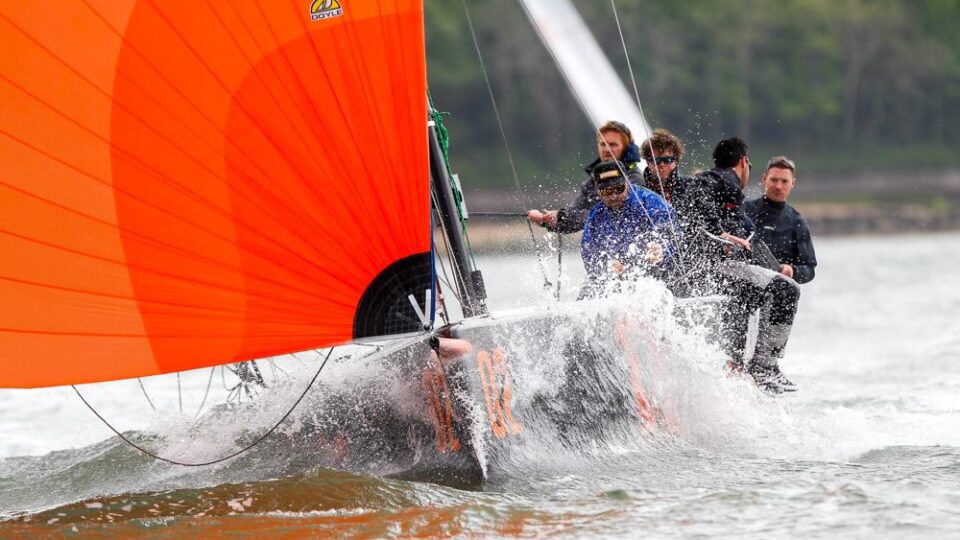
Sailing Crew Roles and Names
The skipper is responsible for the safety of the yacht and the crew’s welfare. However, sailing a boat successfully requires teamwork from the skipper and the crew. This will ensure that all maneuvers—such as leaving a mooring, hoisting sails, changing tacks, reefing, or entering a marina—can be completed with maximum enjoyment and minimum stress.
Boat Captain/Skipper
It may come as a shock, but the skipper is not necessarily the helm. This crew member must ensure that the boat is ready for sailing. He or she needs to make sure that all members of the crew are accounted for. They also need to make sure that food and fuel are sufficient, and sails are ready for hoisting. The skipper is in charge of keeping communications open onboard and help other crew members if needed. Also, they are usually responsible for talking the whole crew through maneuvers as they are about to happen and making sure that all crew members are ready.
What Makes A Good Skipper?
- Responsibility : The skipper is responsible for all aspects of the running of the yacht, its safety, and the crew’s wellbeing.
- Skills : He or she should be comfortable with sailing and navigation skills, inspire confidence in their crew, and be a good communicator.
- Delegation : A good skipper should keep on top of all his or her duties and give the crew tasks that are appropriate to their experience.
- Patience : He or she should be patient with inexperienced crew members and be able to run the yacht with a light touch while retaining respect and authority.
- Briefing : It is the skipper’s role to plan the passage in detail before setting sail.
- Involvement : A good skipper will also encourage the crew to get involved in passage planning and navigation and will always listen to their opinions.
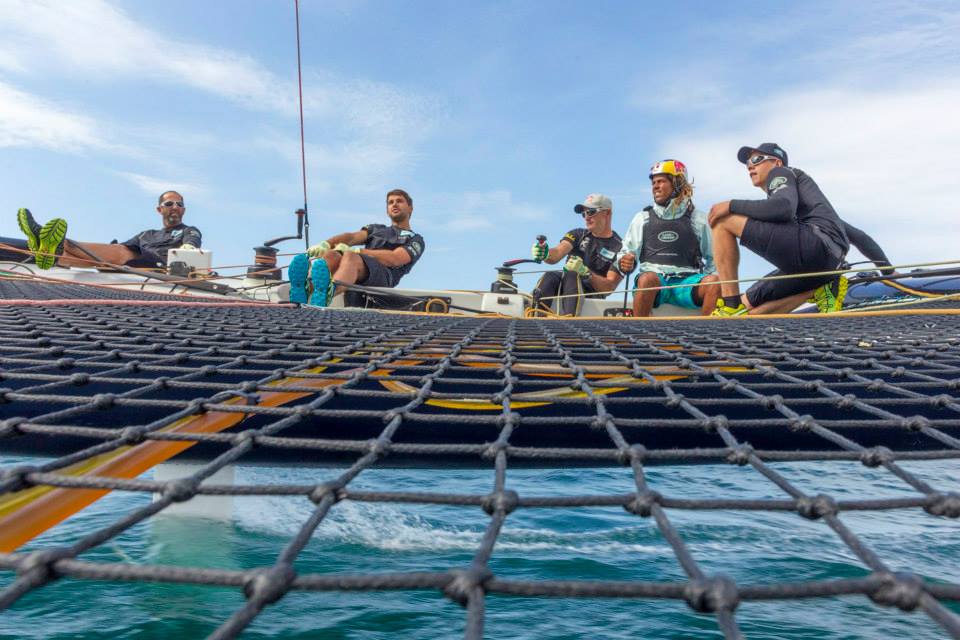
Tactician
The tactician’s role is to get the boat around the racecourse as fast as possible. For that, he needs to take into account the wind, tide, and other competitors, as well as the crew’s ability. They also need to make sure that the boat has the correct course. In short, the tactician is the brains of the sailboat. The tactician must communicate with the helm and skipper to run through maneuvers.
The Helm (Driver)
The Helm is often mistakenly perceived as the skipper. This crew role is to steer the boat where the tactician says and to keep sailing as fast as possible. The helm is also helping with other tasks, but they must focus on the job at hand as much as possible. The helm and the tactician must be in close communication with each other.
Head Sail Trimmers
This crew role is for two members, one who will cut release the sail when going through the tack while the other pulls in the full sail. The crew member releasing can then assist with tailing the sail or trimming it – which is a good example of teamwork. Also, the trimmer should keep adjusting the sail, depending on the point of sail, and should be very focused on that task. Also, the trimmers are in charge of trimming the spinnaker sail and guy when going downwind. Main communication is kept between each other, boat captain and tactician. Pre-start these guys will have a lot to do!
This crew member is in control of all sail hoists and drops depending on the wind. The bowman spends most of their time on the foredeck (the deck at the forward part of the sailboat), preparing for spinnaker hoists, gibes, and drops.
This crew member is a combination of both the bowman and mastman. They are in control of all of the running rigging which comes into the cockpit. This is a vital role and always in the middle of the action. Pitmans must keep communication is between bowman, mast man, and skipper—the eyes and ears for the foredeck crew.
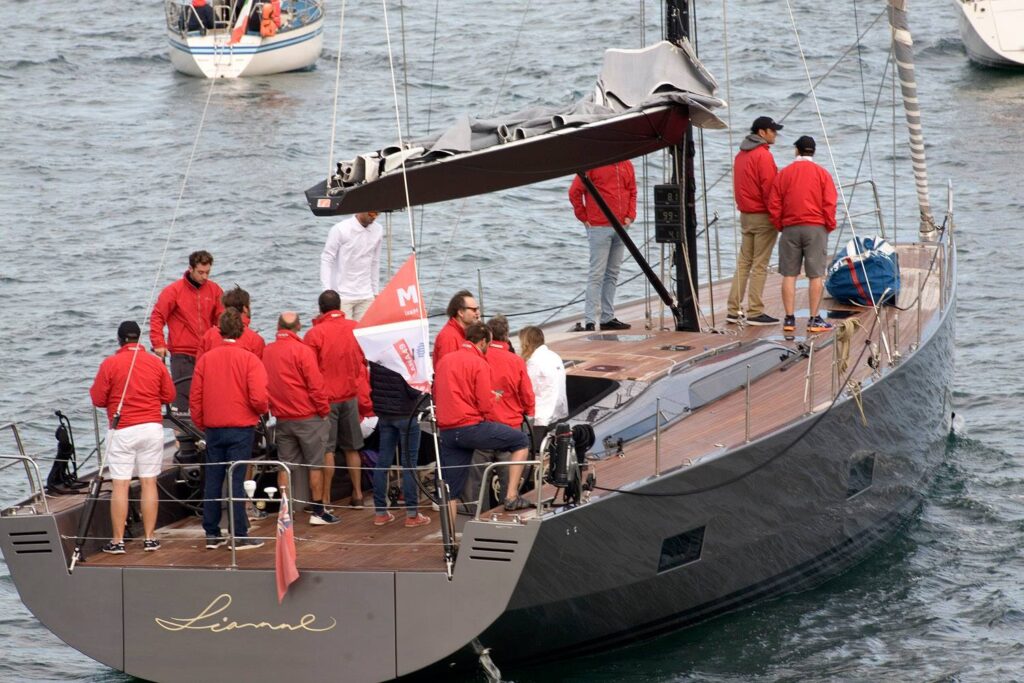
This position is reserved for the stronger members of the crew. A mastman’s foremost task is to assist with the speedy hoisting of the sails during maneuvers. The mast man and bowman go hand in hand and help each other on hoists and drops. The main communication is with the bowman, pitman, and skipper.
No sailing team is complete without its ballast crew members that help to balance the boat in order to reach its top possible speeds and maneuverability. These members of the crew are called ‘ballast’ and are key when racing for the mark. Ballast crew members have the best seat in the house.
What Makes a Good Crew Member?
- Key qualities : All crew members require a positive attitude, sense of humor, and the ability to get along with others in the confined space aboard a cruiser.
- Willingness to Learn : Good crew members are willing to learn and to take an active role in all aspects of running the yacht.
- Attentive : Diligent crew listen to the instructions carefully and ask questions if they do not understand anything.
- Working As a Team : All members of the crew must remember that they are part of a team. A happy gathering in the cockpit at the end of the passage is an indicator that each member of the crew has done their job.
Peter is the editor of Better Sailing. He has sailed for countless hours and has maintained his own boats and sailboats for years. After years of trial and error, he decided to start this website to share the knowledge.
Related Posts

Atlantic vs Pacific: Which is More Dangerous for Sailing?

Why Do Sailboats Lean?

How Does a Boat Sail Upwind? Unveiling the Mechanics of Against the Wind Sailing

How Does Sailing Work? The Physics of Sailing
- Buyer's Guide
- Destinations
- Maintenance
- Sailing Info
Hit enter to search or ESC to close.
The Full List of Yacht Crew & Staff

Published on November 22, 2016
Working on board a super yacht is a fascinating career. Life at sea, whilst demanding can be an extremely lucrative and exciting career path. But do you know the full list of yacht crew and staff? And what it takes to work on a yacht?
Whilst it is more suited to the younger generations, the process and types of crew involved with running these magnificent vessels is impressive.
Of course, the types of staff required for each vessel vary depending on the size of yacht and the type of yacht. In the super yacht world, it is likely that a large number of the below crew will be involved for each yacht. Wow, the staff required to operate a yacht... Share on X
Here is an overview of the crew involved in building, maintaining, and running these floating mansions:
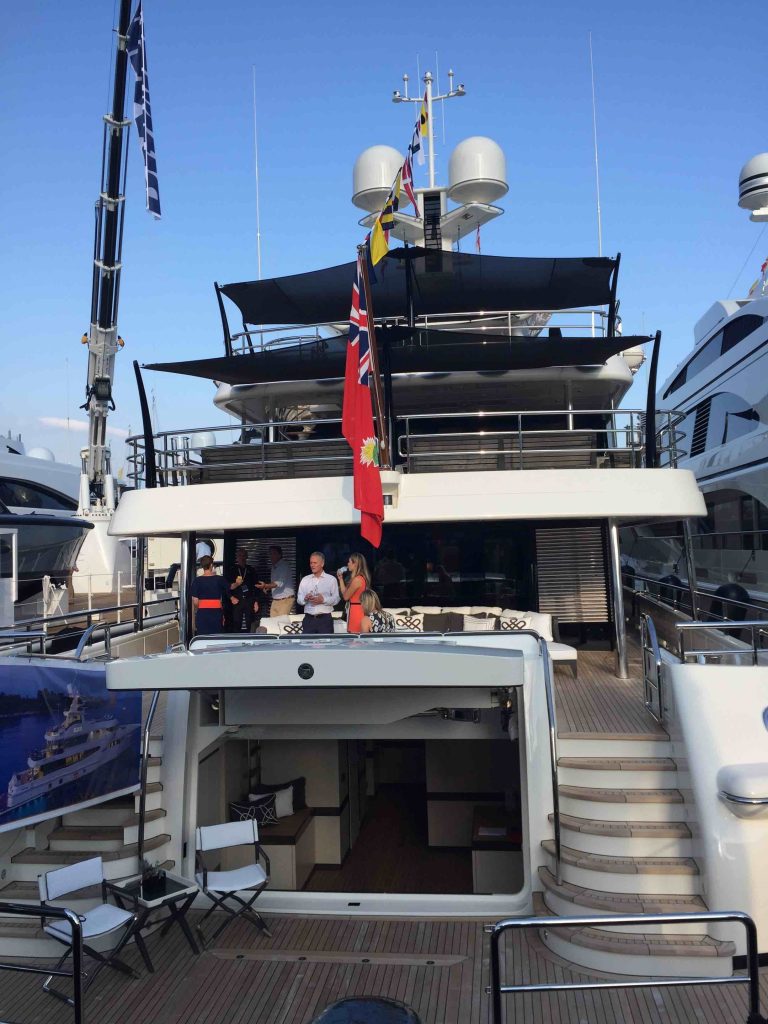
As captain it is you are responsible for the crew, guests and vessel. Every crew member and even visiting guests fall under your command and you have the final say on all yacht decisions. Alongside your qualifications , expect to be paid a high salary in return for your professional service.
Captain/Engineer – A multi-faceted role, this combines the skills of captain with Engineer. A highly sought-after type of crew, they will straddle the skills for both captaining the boat and ensuring engineering issues are dealt with whilst at sea.
1st Officer – Sometimes known as Chief Officer or Chief Mate is second in command to the Captain and manages all the deck crew including the Bosun, Deckhand and any second or third officers. You would be required to undertake bridge duty and thus have a good range of qualifications and skills.
2nd Officer – Is the second-ranking position to the 1st Officer. You would require a good level of qualifications and skills to achieve this position. A 2nd Officer may also be designated in additional areas such as security, medical, or safety, depending on background and specific skills.
3rd Officer – Is the third-ranking position to the 2nd Officer. Qualifications and skills as per the other officer roles are required.
Chase Boat Captain – A chase boat is a vessel which does not live on the main yacht and often has their own crew. These can be towed, driven separately, or berthed in a convenient location.
Chase boats are becoming very popular due to restrictions in tender garage space. As the name would suggest this role refers to the captain who is in charge of the chase boat and subsequent crew.
O.O.W (Officer On Watch) – This is a deck officer in charge of keeping watch on the ships bridge and overseeing navigation whilst on duty. The OOW ensures the ship complies with all COLREGS and safety protocols. This position requires additional qualifications in order to help perform the said duties.
Bosun – Sometimes referred to as the Leading Hand or Senior Deckhand, the Bosun is an experienced deckhand most likely able to take on additional and extra responsibilities. They tend to be the main tender driver and take additional responsibilities in security. Like a deckhand, less qualifications are required, but flexibility and the ability to take direction and blend into the team environment is very important.
Lead Deckhand – As the name suggests, the Lead Deckhand will be in charge of the other deckhands. Generally, only found onboard yachts where more than one deckhand is required, this is a position of responsibility. Ultimately the buck stops with the lead deckhand, so it takes a strong personality and adaptive approach to get the job done regardless of the day or hour!
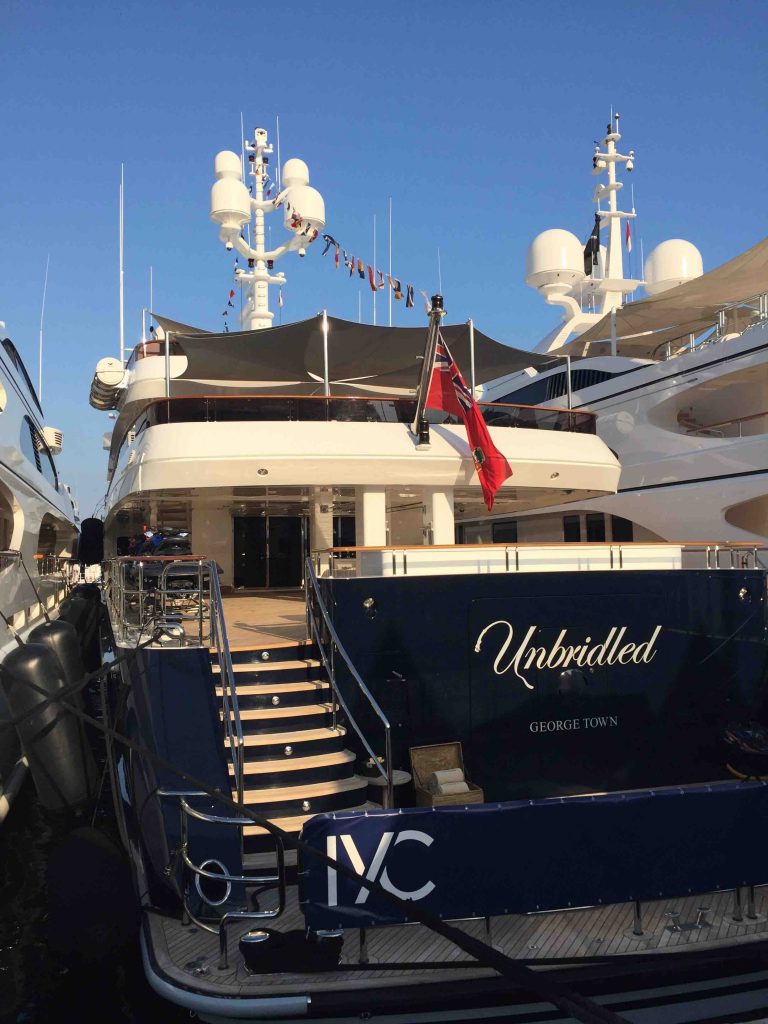
Security Officer – Super yachts are valuable and expensive items, so a dedicated security officer is commonplace. Spending 60 million on a superyacht is considered to be a mid-level purchase in the superyacht world!
Security officers are often employed to take control of all aspects of security, from when the yacht is moored in the bay (and the crew depart for downtime) through to being moored on land. This position is suited to close protection and military background candidates with specific qualifications in security.
Commercial Shipping Master – This is a phrase referring to a Captain of a commercial shipping vessel. They are in essence the captain of the boat (see captain) but will typically be in charge of commercial operations rather than private or chartered yachts and super yachts.
Professional Race Crew – These are unique and exceptional individuals, with a strong background in shipping. Race crew members require a high level of qualification and ability to focus whilst leading the crew and vessel to compete in international competitions.
Purser – Is in charge of the interior and financial matters in accordance to the ship. Normally found on large yachts and superyachts, the Chief Steward will report to the purser. Due to the amount of admin required a strong background of accounts and bookkeeping is required.
Chief Steward/ess – Will be the most experienced member of the Steward team. They will often be in charge of recruiting and training less senior members of the team. The chief steward should have the ability to think ahead, plan for every possibility and focus on the finishing touches and detail required for the very highest standard of service. Yachting qualifications and a proven history of working onboard large yachts are required for this position.
2nd Steward/ess – Second in command to the Chief Steward, the 2nd steward is in charge of all duties as requested by their superior. The 2nd steward ensures interiors, housekeeping, laundry and the presentation of the vessel is spotless. Their duties may include anything from childcare (if required) to pet care. They work closely with the crew to ensure that the guest and clients experience onboard is perfect.
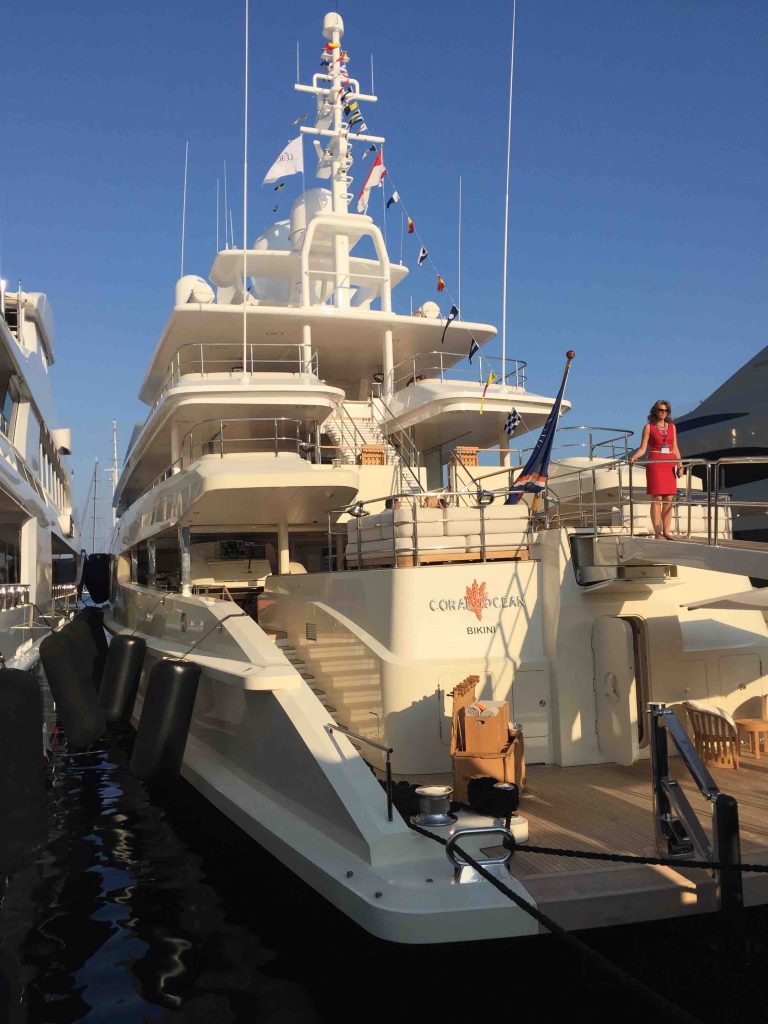
Steward/ess – A role found onboard every yacht or superyacht, the steward is in charge of client experience. From housekeeping through to food and drink service, the steward helps with all aspects of running the yacht. Stewardesses are expected to work long hours and have a good, positive and flexible attitude.
Stew/Deck – This is a combined role between a Steward and Deck crew member. This role straddles both the interior and exterior of the yacht and is a popular choice when needing additional staff on board.
Solo Steward/ess – Typically found on much smaller vessels, the solo steward will be the only steward on board.
Head Chef – Is perhaps one of the most important roles on board. The right chef is the key to a successful crew and perfect guest experience.
A head chef must have a wide range of culinary experiences, and be able to take part in the service for the guests if required, including Silver Service , Buffet Service and Fish filleting at the table.
Sous Chef /2nd Chef – The assistant to the head chef, the sous chef will help the Head Chef with all cooking duties and also cook for the crew of the yacht. Often this role is combined with a steward position, but on the larger vessels this may be a self-contained role (see Cook/Stew).
Cook/Stew – This role combines cooking with steward duties. Assisting the head chef, and then performing standard Steward duties (see Steward).
Cook – This position is suited to an individual who is less experienced as a chef but enjoys cooking. This would be a candidate who is happy to cook for the crew and guests (if required),and will be often used during off duty hours (for example if the chef is sleeping). Generally, not an individual role (unless the yacht is very big), this is a good skill for any of the main crew to have on their CV.
Head of Housekeeping – Often this role is found in the larger vessels or commercial cruises, this person would be in charge of housekeeping and be a specialist in this subject. They would oversee the duties and work closely with the Chief Stew.
Laundry Personnel – This may be a crew member with additional skills in laundry, or on the bigger vessels this may be a dedicated role. This role is typically found more in commercial shipping where the cruise ships require a huge amount of laundry each day at sea.
Beauty/Spa therapist – This is a role-specific with skills in line with beauty and holistic treatments. Superyachts will generally have an area for pampering and your role on the vessel is to satisfy the client’s needs. You would need to have traditional therapist qualifications , along with your yachting qualifications. It is often common to combine the role of 1st Officer/2nd Officer with a combination role.
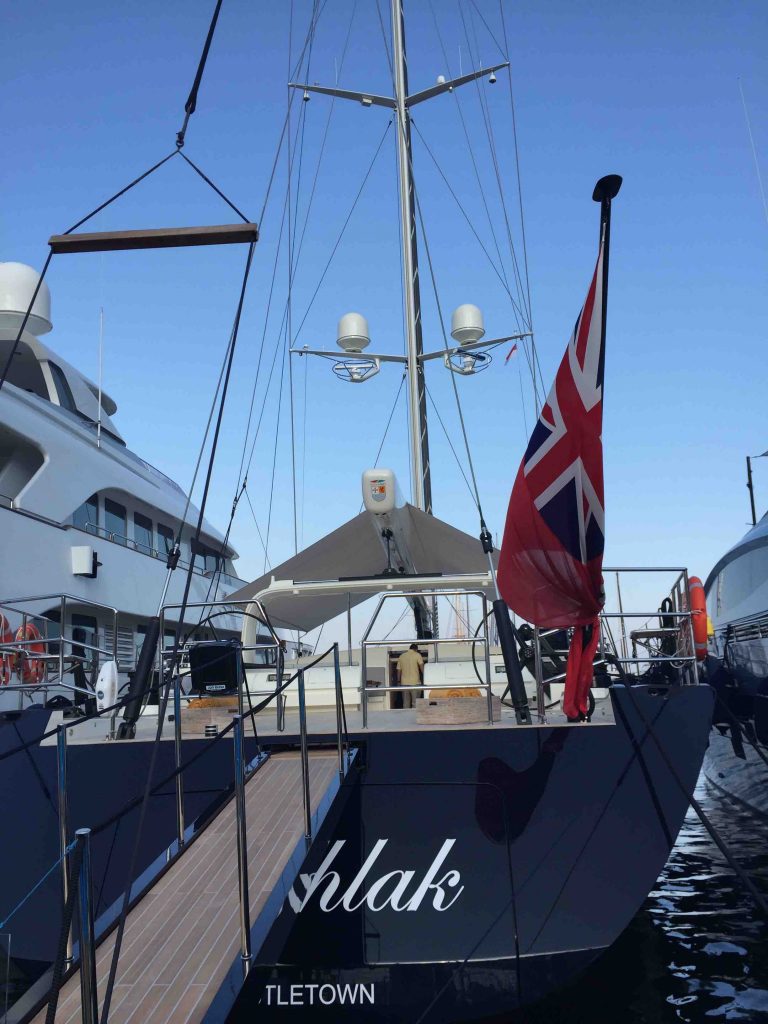
Masseuse – Involved in the beauty/spa area onboard, the masseuse role is to relax and treat the guests at their leisure. From sports massage through to Swedish and reflexology, a range of massage techniques is preferred. Again, this role can be combined with the Beauty/Spa therapist (depending on the size of the yacht) and can also be combined with main crew duties.
Fitness Trainer – Roles specific for personal trainers or fitness coaches, these team members would work with the guests in the dedicated gym areas helping with fitness goals whilst at sea. These might be specific training programmes or general conditions. Again, this role might be a combined role with other crew duties.
Nurse – An important role, particularly if the yacht doesn’t have facilities for helicopter landing. Qualifications must be in line with medical guidelines, and the nurse or Doctor should have ability to cope with a wide range of illness and ailments. Up to date First Aid and yachting qualifications will also be expected. Again, this role can be combined with the main crew duties.
Engineering
Chief Engineer – This member of the team is required to oversee and ensure that the electrical and engineering of the yacht is operating without issues. They should be flexible and willing to help fix not only important problems, but even be willing to help fix a broken toilet!
At sea the right part might not be immediately accessible, so an engineer should be able to troubleshoot and think outside the box.
2nd Engineer – Second in command to the Engineer, the 2nd engineer assists and helps with all duties around the maintenance of the vessel.
3rd Engineer – Third in command to the Engineer.
ETO (Electrician Technical Officer) – Normally employed on larger vessels where the support is required. They report to the Chief Engineer.
Electrical Engineer – Again this role is similar to the ETO. Reporting to the Chief Engineer and holding qualifications in Electrical maintenance.
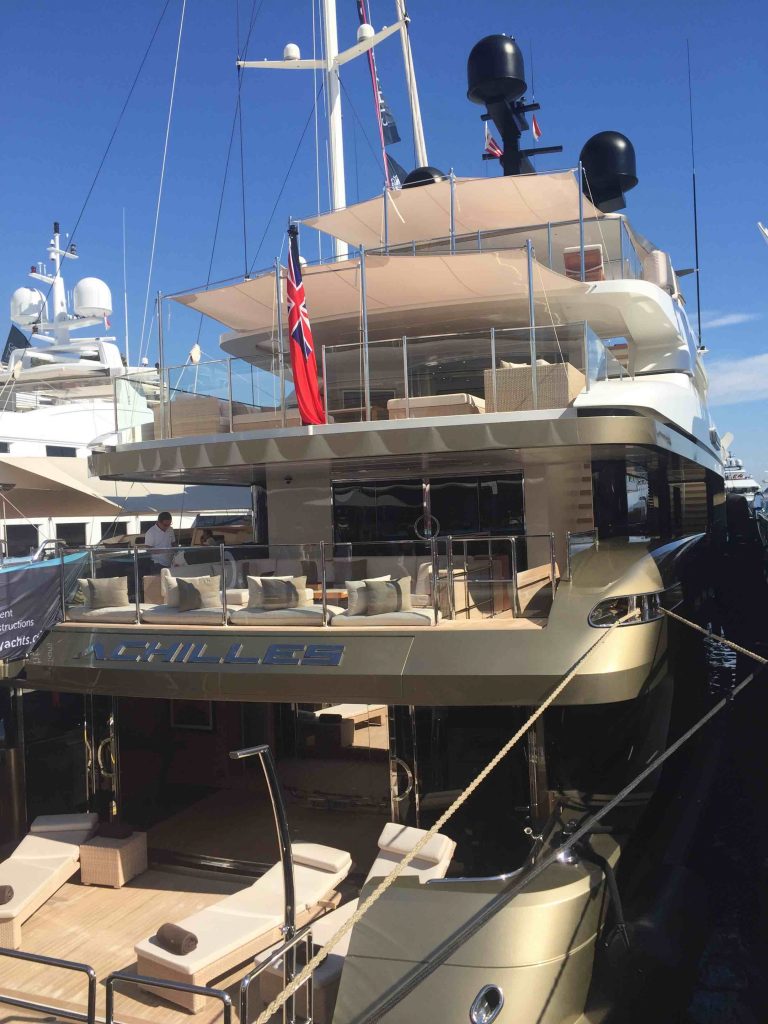
Pilot – For the larger vessels, commercial and cruise yachts, access to the vessel is often by air (helicopter or seaplane). The larger vessels may well have their own aviation permanently stationed on the yacht, and in turn a pilot is required to fly the appropriate aircrafts.
Shore Based
Admin – As the title suggests this team will manage the administration, HR and paperwork of the yacht. Working closely with the purser onboard and with the owner of the vessel, ensuring that the specific operation of the yacht is always managed correctly.
Admin will be closely linked to the Captain, Purser and Chief Steward on the yacht and will involve a whole host of specialised skills from graphic designers through the tech, online support teams.
PA – This role is suited to a highly organised and efficient team member. Working closely with the admin team and the crew onboard the yacht.
Villa Staff – As the name would suggest, this would encompass a wide range of shore-based staff to work within the villa’s typically frequented by the yacht. This could range from a Butler through to Nanny, Housekeeper, Chauffeurs etc.
Contract Workers
Alongside the main crew of the yacht, there are contract workers who are brought in for yacht maintenance. As and when this might be required. These roles are self-explanatory. And they all work to ensure that the yacht is maintained. Any repairs are done efficiently when the yacht is in port or moored for the day.
Roles include: Day Worker, Varnisher, Painter, Spray Painter, Carpenter. Shipwright, Metal Fabricator, Welder, Rigger, Laminator, Electrician. Electrician Expert, Sail Maker, Project Manager. Customer Service Staff and Catering Staff.
How Polo & Tweed Can Help
Did you find this full list of yacht crew & staff helpful? And would you like to work on a yacht? Get in touch with us! Polo & Tweed regularly source and place the finest yacht crew around the world. If you are interested in registering with us or are looking to recruit your new crew members, please don’t hesitate to get in touch with us.

Get Onboard
Superyacht Training
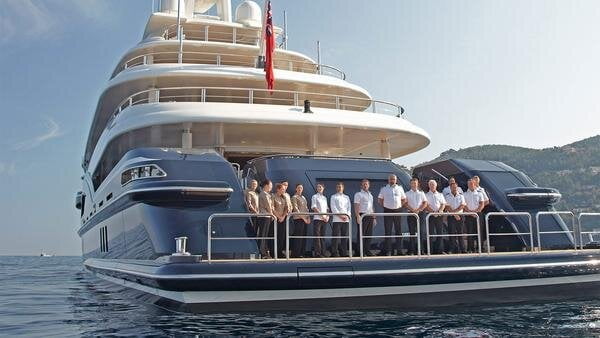
Yachting Terms Cheat Sheet for Yachting Newbies
Getting to grips with yachting terms can be quite imtimidating if you’ve never had any contact with boats or yachts and are generally new to the yachting world so we developed this cheat sheet for you. There will be quite a few terms you will learn during your journey, but there are some basics you’re expected to know before setting foot on deck.
Parts of the Yacht
Aft deck : deck located at the rear of the boat
Stern/Aft : back of the boat
Bow : front of the boat
Port : left side of a yacht
Starboard : right side of a yacht
Sun deck : the usually upper deck of a ship that is exposed to the most sun
Bridge/Wheelhouse : the bridge of a ship is the room or platform from which the ship can be commanded
Lazarette : A storage space in a boat’s stern area
Passerelle : The passageway you walk on from the dock to the yacht. Often incorrectly called a gangplank.
Rooms On Board
Crew quarters : where the crew sleep
Galley : kitchen
Head : bathroom/toilet
Saloon/Salon : living room
Staterooms/Cabins : guest bedrooms
Additional cheat sheet Terms
Aloft: Above deck in the rigging or mast.
Berth: typically is what your bed is called, and sometimes cabins are also referred to as ‘berths”, hower
To Berth : is also when you’re referring to parking the boat. “To berth” means to moor or dock a ship. The parking spot itself also happens to be called a berth. Confused yet?
Bearing: Direction to an object from your current position.
Buoy: (normally pronounced “boowie”, but sometimes “boy”). An anchored floating object that serves as a navigation aid or hazard warning.
Dinghy : A small boat that a yacht carries or tows. Used for transfers to and from shore, and short day cruises and, if powerful enough, water sports. Also typically called a tender on larger yachts.
Fenders : inflatable bumper usually placed between yacht and dock to prevent damage
Helm : steering wheel
Heel: To temporarily tip or lean to one side. This most often happens when changing directions.
Knots per hour : a measure of speed equal to one nautical mile (6076 feet) per hour
Line : rope used aboard a vessel
LOA (Length Over All): the length of the yacht from bow to stern in feet or meters
M/Y : commonly used in yachting to indicate a Motor Yacht
S/Y : commonly used in yachting to indicate a Sailing Yacht
Under Way : when the yacht is in motion
Watch : A division of crew into shifts
Weigh : To raise the anchor
The amount of terms you have to get used to may seem overwhelming at first, but you’ll very soon get to grips with them! If you have questions about yachting and, or yacht life aboard a luxury yacht, get in touch with us or consider buying our Ultimate Guide to Yacht Life that will give you a great intro and all the basics to start a career on a luxury yacht over and above this short cheat sheet.
Needing more?
Error: Contact form not found.
RYA/MCA Online
1. what are the basic requirements you need to be eligible to work in the yachting industry, 2. what is the stcw and why do i need it, 3. what is the eng1 medical certificate, 4. what land based experience will help me find a super yacht job, 5. what are the different departments onboard, 6. what crew training is required for me to work as a junior deckhand.
- Yachtmaster/Coastal Skipper Theory
- Yachtmaster/Coastal Practical
- Specialist Super Yacht Training Course (Deck Hand Training Course)
- RYA Power Boat Level II
- RYA Personal Watercraft Course
- RYA Competent Crew Certificate
- RYA Day Skipper Theory and Practical Certificates
- VHF Radio Operator’s License
7. What crew training is required for me to work as a junior stewardess?
- Stewardess Course
- Proficiency in Designated Security Duties (PDSD)
- MCA Food Safety Level 2
- RYA Powerboat Level 2
8. How do I book my training courses?
9. how do i get my first job on a yacht, 10. are these courses worth it, or am i just wasting my money, 11. will i get hired for my first job from south africa, 12. what is daywork, 13. what are the best locations to get a yacht job, 14. how much can a motor yacht stewardess or deckhand earn, 15. what are the negatives of working on a yacht, 16. what are the positives of working on a yacht, 17. is working on a super yacht for everyone, 18. what is the minimum age to work on a yacht, 19. is accommodation provided when i am completing my yacht training in cape town.

Racing Terms: Glossary for Newer Sailors
If you didn’t grow up sailing, how long did it take you to figure out what sailors mean when they say “put the bow down?” After hearing from newer sailors that the language of racing is hard to decipher, we decided to create a glossary of racing terms and phrases.
We chose racing terms and phrases that are likely to be obscure to newer sailors. To keep the list manageable, we did not include basic sailing terms, words defined in the racing rules, or racing terms applicable to big boats.
Our list is generally organized alphabetically, with a few related terms clustered.
Racing Terms and Phrases for Newer Sailors
| Angle of incidence | The angle between the and the chord line of the sail. | ||
| The direction and speed of the wind as measured from a moving boat. | |||
| Tacking away from other boats to obtain . Often used for starting situations. | |||
| In starting, a boat that sails on starboard tack down towards leeward boats on starboard to try to create room. Barging violates Rule 11 of the Racing Rules of Sailing. | |||
| Flattened | A sail that has been made flatter (less ) with the use of sail controls. | ||
| Starboard blocker | Tactical positioning to windward of a starboard boat. Decreases the chance that a port tack boat will establish a position. | ||
| Kicker, kicking strap (UK term) | Block and tackle (or hydraulic ram on big boats) to control the horizontal angle (rise) of the boom. | ||
| Low mode, foot | Steering away from the wind slightly for more power, | | |
| Sailing downwind with the wind blowing over the leeward side of the boat. | |||
| Depth, fullness | The depth of a sail, measured from the chord line to the deepest point. | ||
| | The chord line of an airfoil is the straight line between the leading and trailing edges | | |
| Strategy to sail from puff to puff while sailing on the as much as possible. | | ||
| Rhumb line | The straight-line course from one mark to the next. | ||
| Layline | Upwind: the line that lets you sail close-hauled to the windward mark (or a start/finish line mark) without pinching. Downwind: the line you would sail to a leeward mark at your optimum angle. | ||
| Long tack/gybe | The tack (or gybe) that lets you sail the most distance without getting to the . Sail the long tack first is a strategy rule of thumb. | ||
| Overstood | A boat that has sailed past the and thus sails extra distance to the mark. | ||
| Loose cover, tight cover | Tactical positioning to stay between your opponents and the next mark. | ||
| Sail control to tension the leading edge ( of the sail. Sometimes incorrectly called downhaul. | |||
| Tack and duck | Maneuver to escape being by a boat close to windward, by bearing off to create separation, then tacking and ducking. | ||
| Draft forward/aft | The point of maximum depth of a sail, measured in percentage of distance from the leading edge. | ||
| Basic puff response technique. | |||
| | The profile of the leading edge of the sail, either flat or rounded. | ||
| Line bias | Starting line: the end of the line that is further upwind. Finish line: the end of the line that is further downwind on an upwind finish. | ||
| Advantaged side | The side of the course that gets you to the next mark faster, due to more wind, favorable shifts, less current, smaller waves, etc. | ||
| Allowing boat to head slightly closer to the wind during a puff. This is an additional component to the technique | |||
| Laying | A boat that is sailing on the toward a mark. | ||
| Bow down, low mode | Sailing upwind at a heading slightly further off the wind than . |
| Make or lose gauge, making or losing trees | A measure of gain or loss against another boat. With a hand-held compass, the change in the compass bearing from one boat to another over time. Without a compass, gains or losses can be measured by the change in the angle between the boats to a distant shore reference, such as trees. | ||
| Shore effects | Wind shifts due to geographic features, such as nearby shore, points of land, obstacles. | ||
| Helm balance, weather helm, neutral helm, lee helm | Helm refers to the tiller. Helm balance refers to the pressure felt on the tiller when sailing in a straight line. Helm balance is often shortened to , as in weather helm, lee helm, neutral helm. | ||
| No-go zone | Boat is stopped or moving slowly heading into the wind (the “no-go zone”). | | |
| Keep it on the wind, point | Sailing close-hauled with the sail trimmed in and the heading such that the sail is neither or . | ||
| Concept that upwind progress can be visualized as a series of lines (ladder rungs) perpendicular to the direction. Also applies downwind. | |||
| Clear lane | A path you can sail on one tack (either upwind or downwind) without encountering other boats or disturbed air. | ||
| Safe leeward position | Sailing upwind with a boat positioned just behind and to windward. The boat ahead and to leeward is advantaged, since the windward boat is not in clear air. | ||
| | The profile of the trailing edge of sail, either flat, open, or closed. | ||
| Distance or angle a boat drifts off course due to the sideways force of the wind. | |||
| A boat that is laterally separated from other boats is said to have , and will gain the most from a favorable shift, but lose the most from an unfavorable shift. | |||
| A wind shift that allows you to change heading without changing sail trim. Upwind, a lift lets you sail closer to the windward mark and a header (knock) makes you sail further away from the mark. Downwind, a lift makes you sail further from the mark and a header (knock) lets you sail closer to the mark. | |||
| Transit | An aid to judging distance to the starting line, by finding a shore reference that aligns with an end of the line. | ||
| Backwind, bubbling | 1) The leading edge of a sail 2) Heading up toward the wind (luffing up) 3) The bubbling or fluttering of a sail when sailing too close to the wind. | ||
| A less skilled sailor. Some experts advise starting next to a marshmallow. | |||
| Bending the mast from a straight line, either fore and aft or laterally. Mast bend is used to shape the sail. | |||
| Rake forward/aft | The fore or aft angle of the mast compared to a horizontal reference. Often measured by the distance from the tip of the mast to the transom. Mast rake affects steering balance and sail power. |
| Sail control to tension the foot of the sail. | |||
| Sailing close to windward of a boat to prevent it from tacking. | |||
| High mode | Sailing upwind at a heading closer to the wind than . | ||
| Velocity | Slang term for velocity. | ||
| Standing rigging, running rigging, shrouds, stays, sheets | |||
| Using weight to roll the boat, minimizing rudder use and accelerating after the sail crosses. | |||
| Strategy to sail in wind that is undisturbed by other boats. | |||
| Angle of heel | Sailing with the optimum angle of heel. The design of the boat (its “lines”) dictates the optimum heel angle. | ||
| Strategy to minimize distance sailed downwind by staying on the gybe that points you closer to the mark. | |||
| In phase, out of phase | Strategy to minimize distance sailed upwind by staying on the tack that points you closer to the mark. If you sail the lifted tack and change tacks when the opposite tack becomes lifted, you are in phase with the shifts. | ||
| Wind that is shifting back and forth around an average direction. | |||
| Wind that shifts in one direction, either progressively, or one time during a leg. | |||
| Unbalanced legs | A course in which the is significantly longer than the opposite tack. A skewed course is not square to the wind. | ||
| A boat on starboard tack (S) crosses just ahead of a port tacker (P) and then tacks as P is ducking her. If S does this right, she will end up with control, to windward and slightly ahead of P. | |||
| Symmetric, asymmetric, code ratings, sheet, guy, pole, dousing | |||
| Separation of air flow from the leeward side of a sail. Also, separation of water flow from a foil (centerboard, lee board, rudder). Stalling occurs when the angle of attack of the sail or foil is too large for the flow velocity. | |||
| When sailing close-hauled, the angle between the boat’s headings on port and starboard tack. Normally roughly 90 degrees but changes by +/- 10 or more degrees in light and heavy wind. | |||
| Tactical maneuver to tack away from a boat ahead and then tack back to obtain clear air or more wind. | |||
| | Sail more closely to the wind, as a result of extra speed. Not exactly the same as , which is sailing closer to the wind but accepting a small loss in speed. | | |
| Shroud tales, luff tales, leech tales | Shroud telltales – ribbons or yarn placed on the side stays (shrouds) to indicate the Luff telltales (or sail tales, woolies, ticklers) – ribbons or yarn placed behind the of the sail to indicate airflow over the sail. Leech tales – ribbons placed on the trailing edge (leech) of the sail to indicate air flow. | Shroud tales Luff tales Leech tales | |
| Expression to help new sailors sail . Move the tiller toward the that are fluttering. | |||
| Control to change the sheeting angle of the mainsheet. | |||
| The direction and speed of the wind over the water, as measured from a stationary reference. | |||
| Twisted, untwisted | The change in from top to bottom of a sail. | ||
| Soak low, heat it up | Downwind technique to maintain boat speed and maximize downwind . Head up in a lull (heat it up) and head down in a puff (soak low). |
| Tensioning the vang so that the boom moves to leeward but not up when easing the mainsheet in a puff. | |||
| Wind shift, righty, lefty | Veer – a shift to the right when facing upwind. Back – a shift to the left when facing upwind. | ||
| VMG | Measure of the rate at which you are making progress directly upwind or downwind. | ||
| Velocity header/lift | A change in the direction due to an increase or decrease in the velocity (not direction) of the . | ||
| Sailing at the heading that maximizes the , upwind or downwind. | |||
| Let the sail breathe, ventilate | Expression that reminds us to avoid over-trimming the sail. Applies in light air, in a lull, or when the boat is going slower than it should for the wind speed. | ||
| Wind vane, wind finder | Rotating wind indicator at the top of the mast. |
Related Content
Sailing Terms from L-36.com – comprehensive list of terms, not limited to racing terms Nautical Language – Expressions from Our Seafaring Roots – not limited to racing terms
Related Posts
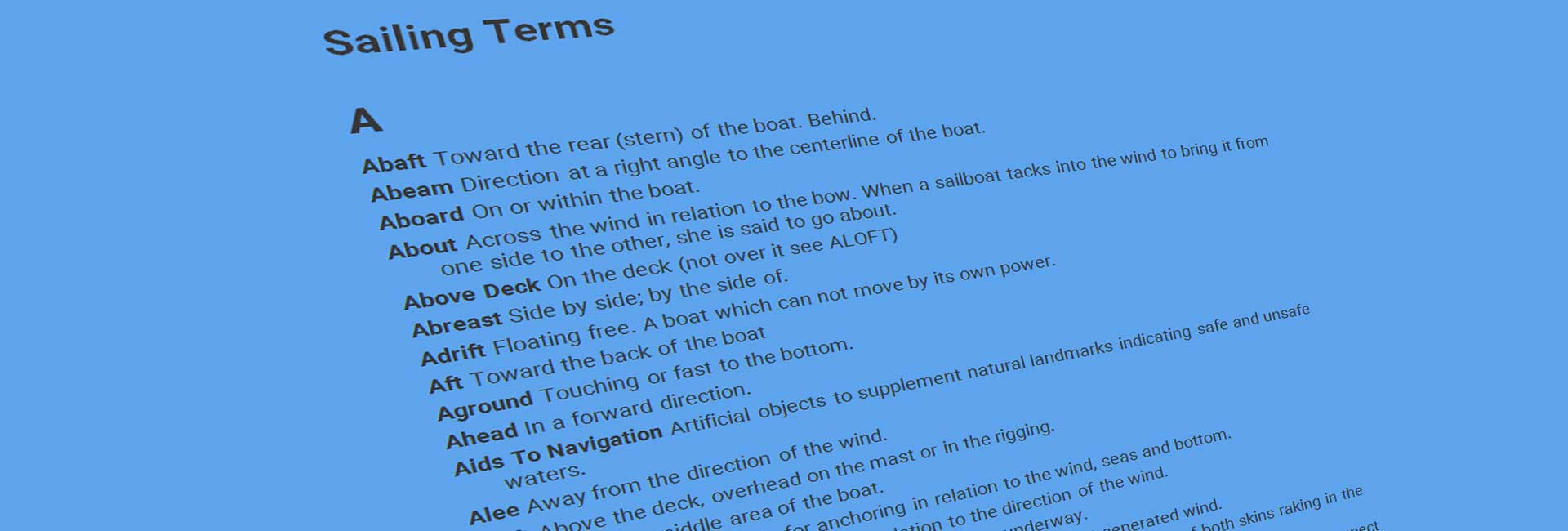
Sailing Terms from L-36.com

Nautical Language: Expressions from Our Seafaring Roots
2 thoughts on “racing terms: glossary for newer sailors”.
No mention of ‘Banging the corner’?
Leave a Comment Cancel Reply
You must be logged in to post a comment.
This site uses Akismet to reduce spam. Learn how your comment data is processed .
Insert/edit link
Enter the destination URL
Or link to existing content

Racing Terms: Glossary for Newer Sailors
Courtesy of SailZing Editor – Racing Terms: Glossary for Newer Sailors
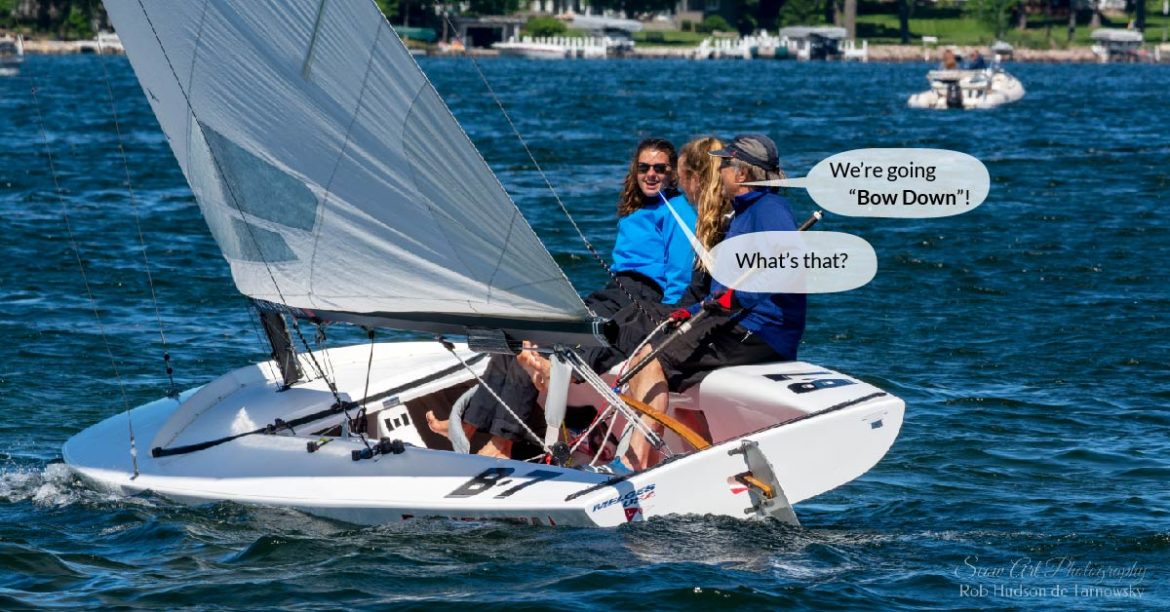
Racing Terms: Glossary for Newer Sailors | If you didn’t grow up sailing, how long did it take you to figure out what sailors mean when they say “put the bow down?” After hearing from newer sailors that the language of racing is hard to decipher, we decided to create a glossary of racing terms and phrases.
We chose about 80 racing terms and phrases that are likely to be obscure to newer sailors. To keep the list manageable, we did not include basic sailing terms, words defined in the racing rules, or racing terms applicable to big boats.
Our list is organized alphabetically. Italicised words have separate definitions. If in doubt, you can always ask your local expert here .
Racing Terms and Phrases for Newer Sailors
| Angle of incidence | The angle between the and the chord line of the sail. | |
| The direction and speed of the wind as measured from a moving boat. | ||
| Tacking away from other boats to obtain . Often used for starting situations. | ||
| In starting, a boat that sails on starboard tack down towards leeward boats on starboard to try to create room. Barging violates Rule 11 of the Racing Rules of Sailing. | ||
| Flattened | A sail that has been made flatter (less ) with the use of sail controls. | |
| Starboard blocker | Tactical positioning to windward of a starboard boat. Decreases the chance that a port tack boat will establish a position. | |
| Kicker, kicking strap (UK term) | Block and tackle (or hydraulic ram on big boats) to control the horizontal angle (rise) of the boom. | |
| Sailing downwind with the wind blowing over the leeward side of the boat. | ||
| Depth, fullness | The depth of a sail, measured from the chord line to the deepest point. | |
| Strategy to sail from puff to puff while sailing on the as much as possible. | ||
| Loose cover, tight cover | Tactical positioning to stay between your opponents and the next mark. | |
| Sail control to tension the leading edge ( of the sail. Sometimes incorrectly called downhaul. | ||
| Tack and duck | Maneuver to escape being by a boat close to windward, by bearing off to create separation, then tacking and ducking. | |
| Draft forward/aft | The point of maximum depth of a sail, measured in percentage of distance from the leading edge.. | |
| Basic puff response technique. | ||
| The profile of the leading edge of the sail, either flat or rounded. | ||
| Line bias | Starting line: the end of the line that is further upwind. Finish line: the end of the line that is further downwind on an upwind finish. | |
| Advantaged side | The side of the course that gets you to the next mark faster, due to more wind, favorable shifts, less current, smaller waves, etc. | |
| Allowing boat to head slightly closer to the wind during a puff. This is an additional component to the technique | ||
| Laying | A boat that is sailing on the toward a mark. | |
| Bow down, low mode | Sailing upwind at a heading slightly further off the wind than . | |
| Make or lose gauge, making or losing trees | A measure of gain or loss against another boat. With a hand-held compass, the change in the compass bearing from one boat to another over time. Without a compass, gains or losses can be measured by the change in the angle between the boats to a distant shore reference, such as trees. | |
| Shore effects | Wind shifts due to geographic features, such as nearby shore, points of land, obstacles. | |
| Helm balance, weather helm, neutral helm, lee helm | Helm refers to the tiller. Helm balance refers to the pressure felt on the tiller when sailing in a straight line. Helm balance is often shortened to , as in weather helm, lee helm, neutral helm. | |
| Keep it on the wind, point | Sailing close-hauled with the sail trimmed in and the heading such that the sail is neither or . | |
| Concept that upwind progress can be visualized as a series of lines (ladder rungs) perpendicular to the direction. Also applies downwind. | ||
| Clear lane | A path you can sail on one tack (either upwind or downwind) without encountering other boats or disturbed air. | |
| Layline | Upwind: the line that lets you sail close-hauled to the windward mark (or a start/finish line mark) without pinching. Downwind: the line you would sail to a leeward mark at your optimum angle. | |
| Safe leeward position | Sailing upwind with a boat positioned just behind and to windward. The boat ahead and to leeward is advantaged, since the windward boat is not in clear air. | |
| Distance or angle a boat drifts off course due to the sideways force of the wind. | ||
| A boat that is laterally separated from other boats is said to have , and will gain the most from a favorable shift, but lose the most from an unfavorable shift. | ||
| The profile of the trailing edge of sail, either flat, open, or closed | ||
| A wind shift that allows you to change heading without changing sail trim. Upwind, a lift lets you sail closer to the windward mark and a header (knock) makes you sail further away from the mark. Downwind, a lift makes you sail further from the mark and a header (knock) lets you sail closer to the mark. | ||
| Transit | An aid to judging distance to the starting line, by finding a shore reference that aligns with an end of the line. | |
| The tack (or gybe) that lets you sail the most distance without getting to the . Sail the long tack first is a strategy rule of thumb. | ||
| Backwind, bubbling | 1) The leading edge of a sail 2) Heading up toward the wind (luffing up) 3) The bubbling or fluttering of a sail when sailing too close to the wind. | |
| A less skilled sailor. Some experts advise starting next to a marshmallow. | ||
| Bending the mast from a straight line, either fore and aft or laterally. Mast bend is used to shape the sail. | ||
| Rake forward/aft | The fore or aft angle of the mast compared to a horizontal reference. Often measured by the distance from the tip of the mast to the transom. Mast rake affects steering balance and sail power. | |
| Wind that is shifting back and forth around an average direction. | ||
| Sail control to tension the foot of the sail. | ||
| A boat that has sailed past the and thus sails extra distance to the mark. | ||
| Wind that shifts in one direction, either progressively, or one time during a leg. | ||
| Sailing close to windward of a boat to prevent it from tacking. | ||
| High mode | Sailing upwind at a heading closer to the wind than . | |
| Velocity | Slang term for velocity. | |
| (Not “rum” line) | The straight-line course from one mark to the next. | |
| Using weight to roll the boat, minimizing rudder use and accelerating after the sail crosses. | ||
| Strategy to sail in wind that is undisturbed by other boats. | ||
| Angle of heel | Sailing with the optimum angle of heel. The design of the boat (its “lines”) dictates the optimum heel angle. | |
| Strategy to minimize distance sailed downwind by staying on the gybe that points you closer to the mark. | ||
| In phase, out of phase | Strategy to minimize distance sailed upwind by staying on the tack that points you closer to the mark. If you sail the lifted tack and change tacks when the opposite tack becomes lifted, you are in phase with the shifts. | |
| Unbalanced legs | A course in which the is significantly longer than the opposite tack. A skewed course is not square to the wind. | |
| A boat on starboard tack (S) crosses just ahead of a port tacker (P) and then tacks as P is ducking her. If S does this right, she will end up with control, to windward and slightly ahead of P. | ||
| Separation of air flow from the leeward side of a sail. Also, separation of water flow from a foil (centerboard, lee board, rudder). Stalling occurs when the angle of attack of the sail or foil is too large for the flow velocity. | ||
| When sailing close-hauled, the angle between the boat’s headings on port and starboard tack. Normally roughly 90 degrees but changes by +/- 10 or more degrees in light and heavy wind. | ||
| Tactical maneuver to tack away from a boat ahead and then tack back to obtain clear air or more wind. | ||
| Shroud tales, luff tales, leech tales | Shroud telltales – ribbons or yarn placed on the side stays (shrouds) to indicate the Luff telltales (or sail tales, woolies, ticklers) – ribbons or yarn placed behind the of the sail to indicate airflow over the sail. Leech tales – ribbons placed on the trailing edge (leech) of the sail to indicate air flow. | |
| Expression to help new sailors sail . Move the tiller toward the that are fluttering. | ||
| Control to change the sheeting angle of the mainsheet. | ||
| The direction and speed of the wind over the water, as measured from a stationary reference. | ||
| Twisted, untwisted | The change in from top to bottom of a sail. | |
| Soak low, heat it up | Downwind technique to maintain boat speed and maximize downwind . Head up in a lull (heat it up) and head down in a puff (soak low). | |
| Tensioning the vang so that the boom moves to leeward but not up when easing the mainsheet in a puff. | ||
| Wind shift, righty, lefty | Veer – a shift to the right when facing upwind. Back – a shift to the left when facing upwind. | |
| VMG | Measure of the rate at which you are making progress directly upwind or downwind. | |
| Velocity header/lift | A change in the direction due to an increase or decrease in the velocity (not direction) of the . | |
| Sailing at the heading that maximizes the , upwind or downwind. | ||
| Let the sail breathe, ventilate | Expression that reminds us to avoid over-trimming the sail. Applies in light air, in a lull, or when the boat is going slower than it should for the wind speed. . | |
| Wind vane, wind finder | Rotating wind indicator at the top of the mast. |
ABOUT DOYLE SAILS // As sailors, our obsession with sailing connects us to the water. The water is our playground, a sanctuary where we seek enjoyment, a competitive playing field where we race; it’s sometimes our home and always a place that unlocks our sense of adventure wherever that adventure might take us.
Our obsession with sailing takes us to every corner of the world and onboard every yacht. We become part of teams, share in the adventures of friends and families, sharing our knowledge and experience with those who have the same passion for sailing as we do. Sailing is in our DNA, where the water unlocks our sense of adventure. We are the custodians of a legacy that has been supporting sailors for close to four decades, and while our world changes around us, our commitment to sailors who seek the same enjoyment and adventure as we do hasn’t.
From our sailors to yours, we are your experts in sailing. Your adventure starts with Doyle. By sailors, for sailors.

- Find A School
- Certifications
- North U Sail Trim
- Inside Sailing with Peter Isler
- Docking Made Easy
- Study Quizzes
- Bite-sized Lessons
- Fun Quizzes
- Sailing Challenge

Learn to Race: Sailing Racing Terms
By: Zeke Quezada, ASA Learn To Sail
Understanding sailing terms is vital to effective communication on a sailboat, and American Sailing has plenty of resources for the new sailor to expand their vocabulary. When you begin to crew or even skipper a race boat, it’s even more critical that everyone speaks the same language because naturally, in a race everything happens more quickly.
Ranging from phrases used in everyday language couched in nautical history, to specific terms important to learn for a beginner sailor, learning to speak the language can be a daunting task, but doing so will make for much smoother sailing when you start to learn to race.
Sailors who race have an even more specific language vital to understanding what is going on when attempting to become the local yacht club champion. As you get immersed in the sailing racing culture, you will understand the commonly used terms on board during a yacht race, but your skipper will appreciate a crew who has done their homework.
If you want to expand on your sailing racing vocabulary and rules knowledge, take a look at the World Sailing Rules , and you’ll round out your sailing language skills.
For a condensed primer, here are some of the standard sailing race terms you should be familiar with as you venture into the racing scene:
- Beat – sailing upwind towards the windward mark
- Reach – sailing perpendicular to the wind, at an angle between a beat and a run
- Run – sailing downwind away from the windward mark
- Start line – the line across which boats start a race
- Starting gun – the signal that starts the race
- OCS – “on course side,” meaning a boat crossed the start line too early and must restart
- Layline – the imaginary line that a boat must sail to in order to round a mark without tacking or jibing
- Mark – An object the sailing instructions require a boat to leave on a specified side, and a race committee vessel surrounded by navigable water from which the starting or finishing line extends. An anchor line or an object attached accidentally to a mark is not part of it.
- Mark rounding – sailing around a buoy or other fixed object on the course
- Finish line – the line across which boats finish the race
- Protest – An allegation made under rule 61.2 by a boat, a race committee, a technical committee or a protest committee that a boat has broken a rule.
- Penalty – a penalty imposed on a boat for breaking a racing rule, typically a time penalty or a penalty turn.
- Zone – The area around a mark within a distance of three hull lengths of the boat nearer to it. A boat is in the zone when any part of her hull is in the zone.
Related Posts:

- Learn To Sail
- Mobile Apps
- Online Courses
- Upcoming Courses
- Sailor Resources
- ASA Log Book
- Bite Sized Lessons
- Knots Made Easy
- Catamaran Challenge
- Sailing Vacations
- Sailing Cruises
- Charter Resources
- International Proficiency Certificate
- Find A Charter
- All Articles
- Sailing Tips
- Sailing Terms
- Destinations
- Environmental
- Initiatives
- Instructor Resources
- Become An Instructor
- Become An ASA School
- Member / Instructor Login
- Affiliate Login
- Brokerage New Construction How to Buy How to Sell
- Yacht Fleet Yacht Catalog Charter Marketing Destination Guides
- Financial Services Payroll & Accounting Payroll Service Process Logistical Support Admin Services Crew Admin
- Job Descriptions Crew FAQ
- About Sitemap

- Yacht Department Directory
- Engineering Department
About the Engineering Department

The engineering department aboard a yacht is essential to keeps things running. Working in this department requires a strong mechanical acumen, troubleshooting skills and the ability to maintain an immaculate engine room. Unlike in the commercial sector, engineers are often involved in docking procedures and guest water sport activities.
This department is responsible for the following aspects of the yacht operation:
- all engineering system operations and maintenance
- electronics & audio-visual
- air conditioning
- sanitation and environmental control
- engine room safety management (ISM)
- planned maintenance coordination (PMP)
The developmental track for a superyacht engineer is linear and involves specific certifications based on technical knowledge, in addition to experience at sea working on certain size engines. This career is suited for individuals with strong problem solving skills and that enjoy "tinkering". Junior engineers work closely with other engineers or captains to gain a basic understanding of the systems onboard. Although they may not have a license upon joining the vessel, the AEC license has minimal. Any person interested in working in the engine room in any capacity should consider investing in this basic certification.
As an engineer builds knowledge and time in the engine room, the numbers of systems they work on and gain understanding of will increase. To ensure constant progression, it is essential to accrue experience and time in the engine room, which will allow continuation of further licensing. The combination of hands-on learning from a senior engineer and technical education courses are compulsory to advance to a position as second engineer.
A second engineer is the chief engineer’s right hand and dependability is paramount. In this position, you have a good working knowledge of all yacht systems. At this level, you can complete basic maintenance and repair independently as well as effectively assist the chief on advanced projects. Your duties will also include working with outside vendors and contractors.
A chief engineer is fully accountable for the entirety of the engine room and safety aboard the yacht. The position requires leadership and strong management skills in addition to technical expertise. As the size of the yacht increases, so does the number of engineers on board, complexity of systems and scope of engineering projects that require detailed time and fiscal oversight.
Career Path
Chief engineer unlimited, chief y1 (<3000gt < 9000kw), chief y2 (<3000gt < 3000kw), chief y3 (<500gt < 3000kw), chief y4 (<200gt < 1500kw), 2nd unlimited, 2nd (<3000gt <6000kw), 2nd (<3000gt <3000kw), 2nd (<500gt <3000kw), oow engineer (meol), oow engineer (aec), electronics engineer (eto), junior engineer (unlicensed).

- Mail: [email protected]
- Call Us: +44 (0) 23 8045 8737
How to sail: A-Z of Yachting Terms
When learning how to sail have you ever wondered when you are on a yacht what some of those yachting terms mean, we have asked our RYA Training Centre pupils which ones confuse the most. Here are a selection, which includes the obvious to the more obscure!
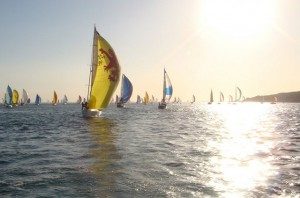
A baft: A location on the boat but further to the rear of the boat. “The tiller is abaft the mast.”
A beam: The beam is the widest part of the boat. When another boat is abeam, it is at a right angle off the beam to either the starboard or port side of the boat you are on.
A ft: When on a boat you refer to the stern part of the boat as being aft or to the rear of the boat.
A head: A term used to describe the area in front of the boat you are on. “Look ahead.”
A ids to Navigation: This includes all external systems like channel markers, preferred route buoys, danger and safe water buoys, isolated danger and regulatory markers etc. that help determine a boats position or course, the presence of dangers or obstructions and the preferred route to navigate.
A midships: In the middle of the boat between the stern and the bow.
A pparent Wind: The apparent wind is a combination of the true wind and the wind caused by the boat travelling through the water. On an windex, the apparent wind will cause the windex to show wind direction just in front of the true wind.
A stern: A location off the boat and behind it.
B ulkhead – Refers to an often watertight, interior wall on the boat
Backing Wind: Refers to the wind shifting direction in a counter-clockwise direction. This usually means that bad weather is approaching.
Backstay: A wire running from the top of the mast to the stern of the boat. The backstay stops the mast from falling forward and also helps to control the degree of mast bend when tuning a boat.
Battens: Wood, fiberglass or plastic strips slid into pockets along the leech of the sail. Battens help to shape and strengthen the sail to increase overall performance.
Beam: The widest part of the boat.
Beam Reaching: One of the points of sail. You are ‘beam reaching’ when sailing directly sideways to the wind on either a port or starboard tack. Think of a clock face – if the wind is blowing from 12 o’clock, sailing at between 3 o’clock or 9 o’clock would be a beam reach.
Bearing Away: Turning away from the wind or turning downwind.
Beating: Sailing towards the wind by tacking back and forth across the wind.
Belayed: Secured, tied to, made fast to.
Bend On: To secure one thing to another. Tieing two lines together.
Bifurcation: A channel junction (two channels meeting) usually marked by a ‘bifurcation buoy’ indicating the perferred channel to follow.
Bight: A loop or bend in a line.
Bilge: The lowest inner part of a boats hull.
Bitter End: The utmost free end of a line. (The other end is referred to as the ‘Standing Line’).
Boat Wind: The wind created by the boat moving through the water. The true wind and the boat wind combine to create the apparent wind direction.
Boat Fall: Rigging used to raise or lower a ship’s boat.
Boat Painter: Rope tied to the front end of a boat used to either tow a boat or to secure it to a dock.
Bollard: Wooden or iron post on a pier to which the boat is secured.
Boom: The boom is the pole running aft from the mast to which (among other things) the foot of the mainsail is attached.
Bowline: A very strong and yet easy to untie knot that creates a loop in the end of a line.
Breastlines: Mooring lines that run from the bow and the stern at right angles to the dock to stop the boat from drifting out from the dock.
Broad Reach: One of the points of sail. Sailing downwind off to the port or starboard side. Think of a clock face – if the wind is blowing from 12 o’clock, sailing at between 4-5 o’clock or between 7-8 o’clock would be a broad reach.
By the Lee: Sailing downwind with the mainsail remaining on the same side of the boat that the wind is hitting. If you are sailing downwind on a port tack, typically the mainsail would be off the starboard side of the boat. When sailing ‘by the lee’, the mainsail in the same situation would remain on the port side of the boat out at a 90 degree angle to the boat.
C lew – The lower aft corner of a sail
Cabin: The below deck living quarters.
Cable: Measurement of distance equal to 0.1 nautical mile.
Cam cleat: A fitting through which a line is run through. The cam cleat consists of two cams that wedge against the line stopping it from being pulled out.
Cardinal Aids to Navigation: Buoys with indicate the location of hazards, safe water or deep water by reference to the four cardinal points of a compass (North, South, East, West).(See our section on buoys for a more complete explanation.)
Catboat: A boat with one mast flying no foresail (jib).
Cast Off: To release the lines allowing the boat to leave it’s mooring.
Chainplates: Very strong metal plates affixed to the hull to which the forestay, backstay and shrouds are attached.
Chart Datum: For navigational safety, depths on a chart are shown from a low-water surface or a low-water datum called chart datum. Chart datum is selected so that the water level will seldom fall below it and only rarely will there be less depth available than what is portrayed on the chart
Chock: a metal fitting, either oval or U-shaped, through which mooring lines are passed. Chocks help reduce abrasion saving the lines from excessive wear and tear.
Cleat: A small, metal deck fitting with horns used for securing lines (belaying).
Clew: The lower rear corner of a sail.
Close Reach: Point of sail – sailing against the wind at an angle somewhere between a Beam Reach and Close Hauled. Think of a clock face – if the wind is blowing from 12 o’clock, sailing at 2 o’clock or 10 o’clock would be a close reach.
Close Hauled: Point of sail – sailng as close to the wind (sharp angle to the wind) as possible without the sailings luffing (fluttering).
Cockpit: The open inset area from where the boat is steered.
Companionway: Stairs or ladder on a boat usually leading down to the cabin.
Cringles: Open metal rings inserted into the sail (also called grommets) used as reefing points for a sail but also found at the clew, head and tack of the sail to attach halyards, lines, outhauls etc.
Cunningham: A line used to adjust the forward edge of the mainsail. Usually runs from the tack of the sail to the front area of the boom.
Current: The horizontal flow of water. (Tide is the vertical flow of water.)
Cutter: A cutter has one mast but sails with two foresails.
D raft – This describes the depth of a boat measured from the deepest point to the waterline
Davit: A crane onboard that can be swung out over the side for hoisting or lowering boats.
Dead Reckoning: Navigational term – method used to plot the course already travelled by measuring speed and time to calculate distance.
Deep Six: A slang term meaning to discard something over the side of the boat.
Degree: A distance of measurement on a nautical chart. One degree equals 60 nautical miles. Each degree is broken down into 60 minute intervals. One minute of one degree equals 1 nautical mile.
Deviation: A ship’s magnetic compass reading can be affected by metal objects on the boat (electronic equipment etc). The difference between the correct magnetic reading and the ships compass magnetic reading is called deviation. Deviation will vary depending on the direction of the boat.
Dog: A metal fitting used to secure watertight doors, hatch covers and scuttles.
Downhaul: A line attached to the tack of the sail and used to pull down or tighten the mainsail to increase sale efficiency.
E ase: To let out or ‘ease off’ a line.
E nsign – The national flag of the boats home country
F Fairleads: A metal fitting through which lines are run to in order to change the direction of the lines while reducing friction on the lines.
Fairway: Sailing on inland waters, fairway means an open channel or being in midchannel.
Fast: To make fast. To secure (snugly tie) a line to something.
Fathoms: A unit of measurement. One fathon equals 6 feet.
Fenders: Cylindrical air filled plastic or rubber bumpers hung off the side of a boat or dock to prevent damage to both dock and boat.
Fetch: The distance over open water the wind has blown.
Faked: A line is faked by zig zagging it back and forth so that when it is used it will not tangle on itself.
Flaked:A sail is flaked when lowered. Flaking a sail is the process of folding the sail back and forth upon itself like the blades on a paper fan. Flaking a sail will help prolong the sail life.
Foot (Sail): The foot of a sail is the lower part of the sail. In the case of a mainsail, this is the part of the sail that runs along the boom.
F orepeak- The cabin most forward in the bow of the boat
Forestay: The forestay is a wire that runs from the top of the mast (or near the top of the mast) to the bow of the boat. The forestay supports the mast from falling backwards and is also used in shaping the bend in the mast for maximum efficiency. The luff (front) of the foresails (jib, genoa) are also generally attached to the forestay depending on the rigging system.
Forward: When on a boat, forward means towards the bow. “Move forward” – move towards the front of the boat.
Galley: The boat’s kitchen.
Genoa: The Genoa is a foresail that is larger than a jib. The clew (lower corner at the foot of the sail) extends aft of the mast unlike a jib.
Give-way Boat: Navigational rules – the boat not having the right-of-way. The Give-way boat must stay clear of the Stand-on boat. The Give-way boat must make it’s intentions known by making a decisive maneuver to alert the Stand-on boat.
Gooseneck: This is a metal fitting that attaches the boom to the mast.
G oosewinging – To sail downwind with the mainsail set on one side and the foresail on the other
Gybing: Sailing down wind and turning through the wind causing the sails to move from one side of the boat to the other.
Gybe ho: Term used by the helmsman to let his crew know that he has started to turn the boat into a gybe.
H alyard – A line which is used to raise things on a boat, so the main halyard line would be used to raise the mainsail
Halyards: Lines used to lower and raise sails.
Hanks: Clips found along the luff (front) of the foresail used to clip the sail onto the forestay (wire running from the bow to the top or near the top of the mast).
Hard over: Turning the wheel or pushing the tiller all the way over.
Head: Generally used to refer to the boat’s toilet. When talking about a sail, the Head is the top of the sail.
Head to Wind: The bow of the boat is pointed directly into the wind.
Heading up: Turning up more into the wind.
Heaving to: A way to, in effect, stall a sailboat by backing the jib, easing out the mainsail and turning the rudder hard into the wind. The forward wind pressure on the foresail wants to force the bow downwind. The rudder turned towards the wind wants to force the bow windward. These two counter effects balance each other causing the boat to hold it’s position with little movement. The mainsail is eased out all the way so that it does not catch any wind and therefore has no bearing on the boats postion.
Heeling: Leaning or heeling over caused by wind pressure on the sails.
Helm: The Helm is the steering mechanism of the boat (wheel or tiller). The person at the helm is called the helmsman.
Helms Alee: A term used by the helmsman to notify the crew that he has started to tack. Hypothermia: A dangerous condition where the body core temperature has been lowered causing extreme shivering, loss of co-ordination, in ability to make decisions and in extreme cases, loss of conciousness and even death.
I nlet – A recess, such as a cove or bay, along a coastline
In Irons: This occurs where the boat has been turned directly into the wind and has lost all forward momentum. Without forward momentum the boat loses it’s ability to steer.
J ackstay – A strong line, that can be made of wire, which runs fore and aft alongside the boat that can be used to attach your safety harness to.
Jacob’s ladder: A light ladder made of rope or chain with metal or wooden rungs used over the side or aloft.
Jib: The jib is a foresail (smaller than a genoa). The jib is about the same size as the triangular area between the forestay, mast and foredeck.
Jiffy reefing: This is a way to make the mainsail smaller by partially lowering it, tying or reefing the lower slack part of the sail onto the boom through gromets (holes in the sail) called reefing points. This is done in high wind conditions to power down the sail.
Jury rig: Makeshift – adapting parts and materials for a use not specifically designed for in order to get by until proper parts or repairs can be obtained.
K etch – A sailboat with 2 masts
Kedging: A method used to free a grounded boat by dropping it’s anchor in deeper water and then pulling on the anchor rode to attempt to free the boat.
Keel: The large heavily weighted fin like structure secured to the bottom of the boat. The keel helps to keep the boat upright and also reduces leeway (side slipping across the wind).
Ketch: A two masted boat. The second and smaller mast (mizzen) is positioned just forward of the rudder post.
Knot: Rate of speed. On land it is miles per hour, on the water it is knots (nautical miles) per hours. One knot equals 1.15 land miles – so one knot is just a bit faster than one mph.
L eeway – The sideways movement of a boat caused by wind and currents
Lateral Aids to Navigation: channel buoys (Red & Green), isolated danger buoys (Black & Red), safe water ahead (Red & White), regulatory buoys (Yellow), bifurcation buoys (Black & Yellow) plus channel identification markers and navigation markers are all considered Laterial Aids to Navigation.
Lazarette: A storage compartment, usually under the seats of the cockpit.
Lee Helm: Also called Weather Helm, this is the tendancy of the boat to turn into the wind once it has heeled over at a sharp angle.
Lee Shore: Feared by most sailors, this is the downwind shore from the boat.
Leech: The rear edge of the foresail or the mainsail running from the head (top) to the clew (rear corner) of the sail.
Leeward: Downwind.
Leeway: When a boat sails across the wind, the force of the wind causes the boat to slip sideways. This drifting or sideway motion is known as Leeway.
Lifelines: The lines running around the outside of the deck creating a railing. The lines are attached to stanchions (upright metal posts).
Luff: The forward edge of a sail running from head to tack (front corner of the sail).
Luffing: A sail is luffing when it starts to flutter in the wind. The term Luff is also used to describe the same situation. “The sail is starting to luff.”
Luff Up: To turn into the wind to cause the sails to start luffing.
M ultihull – Any boat that has more than one hull, such as a catamaran.
Made fast: Secured to.
Mast: The upright pole supported by the shrouds, forestay and backstay to which the sails are attached.
Masthead fly: A windvane attached to the top of the mast to show which direction was wind is coming from.
Monkey fist: A type of knot, heavy in nature and tied to the end of the rope. The weighted knot makes it easier to throw the rope a farther distance.
Mooring ball: An anchored ball to which you can secure your boat. Safer alternative to anchoring provided the mooring ball and lines are in good condition.
Mooring lines: Lines used to secure a boat to a dock or mooring ball.
MSD: Marine sanitation device (toilet).
N eap tide – When during the four week tidal cycle, the tide rises and drops the least.
Nautical mile (NM): International standard for measuring distance on water. One nautical mile equals one minute of latitude. (One nautical mile equals 1.15 land miles.)
O uthaul – This is a line used to tension the foot of the sail, to better control the curvature of the sail
P ulpit – A sturdy rail around the deck on the bow, normally surrounding the forestay
Pad eye: A metal eye (ring) through which lines can be passed in order to stop chaffing.
Painter: The bow line of a dinghy.
P-effect (Prop Walk): When a boat is in a standstill position and put into forward or reverse, the resistance of the boat to move and the motion of the propeller creates a paddlewheel effect pulling the stern of the boat to either port or starboard side depending on the spin of the propeller. This paddlewheel effect is known as P-effect or Prop Walk. P-effect is especially noticable in reverse where there is greater boat resistance to move backwards thus making it easier for the prop to pull the boat sideways.
PFD: Personal Floatation Device – life jacket.
Pintle and gudgeon: The pintle and the gudgeon together form a swinging hinge usually associated with the installation of the rudder on smaller tiller steered boats. The pintle has pins that fit into the holes on the gudgeon thus creating a hinge like fitting.
Points of sail: A reference for the direction the boat is travelling in relation to the wind. (in irons, close hauled, close reach, beam reach, broad reach, running)
Port: When on a boat and facing forward, the left hand side of the boat.
Port tack: Sailing across the wind so that the wind hits the port (left) side of the boat first.
Pulpit: Located at the bow of the boat, this area is enclosed by a metal railing.
Pushpit: Located at the stern of the boat and like the pulpit, this area is enclosed by a metal railing.
Q uadrant – This is a device connected to the rudder that the steering cables attach to
R egatta – Boat races
S hroud – The wires at the side that hold the mast up
Schooner: A sailboat that has two masts both the same height or on some schooners, the aft mast is higher than the fore mast.
Scope: Expressed in terms of a ratio, it is the length of the anchor rode let out compared to height above the sea bed. Height is measured not from the water line but from the top of the deck to the sea bed. A safe anchoring ratio is 1:7 which translates to 7 feet of anchor rode for every foot of height. Many sailors incorrectly assume that height means water depth and therefore find themselves dragging the anchor for lack of proper scope.
Seaworthy: A boat that is fit to be sailed at sea.
Self-bailing cockpit: A cockpit that allows water to drain automatically from the cockpit to the outside of the boat.
Shackles: Metal fittings (often U shaped) that open and close with a pin across the top of the ‘U’. Lines and halyards often use shackles. The mainsail halyard is secured to the head of the mainsail with the use of a shackle.
Sheave: A roller/wheel to guide a line or wire.
Sheets: Lines that are used to adjust sails by either pulling them in or by letting them out.
Shrouds: Also called sidestays, shrouds are the metal wires found on both sides of the mast running from the deck to the top or near top of the mast. The shrouds support the mast by providing lateral support.
Slack water: The period between the flood (tidal water moving in) and the ebb (tidal water moving out) where the water has in effect stalled – little or no movement.
Slides: The groove in the mast to which the luff (front side) of the mainsail is inserted. The slides hold the sail tight against the mast and allows the sail to be easily raised or lowered.
Sloop: a sailboat that has one mast and sails with the mainsail and one foresail.
Soundings: Water depths.
Spar: A spar can refer to any of the following: mast, boom or a pole.
Spinnaker: A large balloon-like foresail used for sailing downwind (running or broad reach).
Spinnaker pole: The spinnaker pole is boom-like in nature, but smaller and lighter, and attaches to fore part of the mast a few feet up from the deck. The other end of the spinnaker pole attaches to the leeward (down wind) base of the spinnaker.
Spreaders: Bars extending sideways from the mast (gives the mast a cross-like appearance). The spreaders hold out the shrouds so that they do not interfer with the rigging.
Springlines: Springlines are used to secure a boat to a dock and stop the boat from moving forward or backwards. The aft springline runs from a point on the boat near the bow to a point aft on the dock. The forward springline runs from a point on the boat near the stern to a point forward on the dock.
Squall: A sudden isolated storm associated with potentially high wind gusts.
Stanchions: Upright metal posts running around the outside of the deck supporting the lifelines.
Stand: This refers to the short period of time where the tide is neither rising or falling. (At a stand still.)
Standing rigging: Standing rigging includes the forestay, backstay and the shrouds. Unlike the ‘running rigging’, the standing rigging is generally only adjusted when the boat is not underway.
Stand-on boat: The boat that must retain her current course and rate of speed in order to avoid a potential collision with an approaching give-way boat.
Starboard: As you face towards the bow on a boat, starboard is the right hand side of the boat.
Starboard tack: Sailing across the wind with the wind hitting the starboard (right) side of the boat first.
Steerage: The ability of the boat to be steered. In order for a rudder to be effective in steering a boat, there must be boat movement. A boat not moving cannot be steered.
Stern: The most aft part of a boat (the very back of the boat).
Storm jib: Same as a jib but not as big. The smaller sail is used in high wind conditions.
T ender – A small boat or dinghy used to ferry crew between the boat and shore
Tack: The front lower corner of a sail. Also means to sail back and forth across the wind in either a port or starboard tack.
Tacking: Also called “Coming About”. Tacking is when the bow of the boat is turned through the wind onto the opposite tack.
Tail: The bitter end of a sheet tailing out from a winch.
Tang: A metal fitting used to affix the stays to the mast.
Telltails: (Also called Ticklers) These are small strings (wool, plastic) attached to both sides of the luff of the sail. When the telltails on both sides of the sail are blowing straight back, this indicates that the sail has been properly trimmed.
Through hulls: Through hulls are holes that go through the boat. Each through hull will have a shuttle cock (value) to stop the flow of water. An example of a through hull would be the head (bathroom). A through hull value is opened so that water from outside the boat can be pumped into the MSD (toilet). The value is closed and the toilet pumped empty into a holding tank.
Tide: The vertical rise and fall the oceans.
Tide rips: This is an area of rough water where the wind is blowing across the water in the opposite direction from which strong tidal current is flowing.
Tiller: In boats that are not steered by a wheel, a tiller (long handle) is attached to the top of the rudder in order to facilitate steering.
Toe rail: A small metal railing running around the outside of the deck used to support your feet.
Topping lift: A line running from the top of the mast to the end of the boom. The topping lift supports the boom when the sail has been lowered.
Topside: The portion of the hull above the water line.
Transom: The flat area across the stern of the boat.
Trim: To trim or adjust the sail to make it more effective against the wind.
True wind: The actual wind felt wind the boat is not moving.
Turnbuckles: Adjustable fittings usually attached at the end of shrouds and stays. Turning the turnbuckle one way or the other tightens or loosens the wire.
U nfurl – To unroll a sail
Upstream: Moving from seaward into harbor, moving with the flood of the tide, moving up river toward the headwaters.
V ane – A wind direction indicator
Veering: A wind shift in the clockwise direction usually indicating that good weather is approaching.
W inch – A mechanical device for pulling in a line
Wake: The waves created behind a boat as a result of the boat moving through the water.
Way: Movement of the boat.
Weather helm: The tendancy of the boat to turn up wind after heeling (leaning over).
Wheel: Controls the rudder. Taking control of the wheel is taking the helm.
Winch: Provides a mechanical advantage. Used to raise the sails, tighten the sheets and other lines.
Windward: Towards the wind.
Wing to wing: Running (sail directly downwind) with the mainsail out one side of the boat and the foresail out the other side of the boat.
X marks the spot on the treasure map!
Y awing – The side to side movement of a boat on an uneven course
Yawl: A sailboat that has two masts. The aft mast (mizzen) is shorter than the foremast. The mizzen mast is located aft the rudder post. (On a Ketch, the mizzen mast is located fore of the rudder post – this is the distinquishing factor between the two.)
Z ephyr – A very light westerly wind
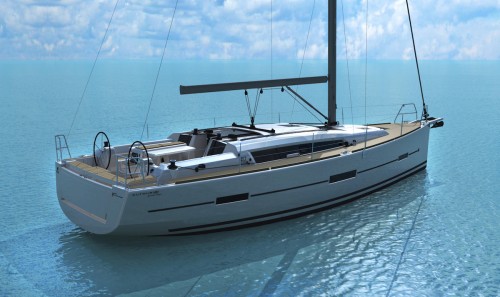
Universal Yachting Ltd
- Terms & Conditions
- Privacy Policy
- DATA REQUEST
- Dufour Yachts
- Boats For Sale
- Yacht Charter

Universal Yachting Ltd: Mercury Yacht Harbour, Satchell Lane, Hamble, Southampton, Hampshire SO31 4HQ
Call Us: +44 (0) 2380 458737 Mail: [email protected]


What is Yacht Racing? (Here’s All You Need To Know)
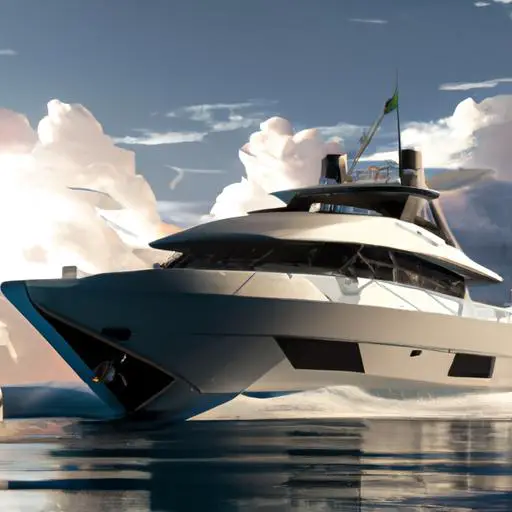
Have you ever watched a yacht race, with its colorful sails gliding across the water in a graceful dance? Have you ever wondered what it takes to participate in yacht racing? This article will take you through all you need to know about yacht racing, from the different types of yachts and races, to sailing clubs and regattas, technical knowledge and skills, safety, and the benefits of yacht racing.
We’ll also explore some of the most popular events and races.
So whether you’re an avid sailor or just curious about this exciting sport, you’ll find all the information you need here.
Table of Contents
Short Answer
Yacht racing is a competitive sport and recreational activity involving sailing yachts .
It is most popular in areas with strong maritime cultures, such as the UK, US and Australia.
Races typically involve a course that boats must follow, which can vary in length depending on the type of race.
Competitors often use advanced sailboat designs, and use tactics and strategy to try to outmaneuver their opponents in order to be the first to cross the finish line.
Types of Yachts Used in Racing
Yacht racing can be done with a wide variety of boats, from dinghies and keelboats to multihulls and offshore racing boats.
Dinghies are small, lightweight boats with a single sail and are often used in competitive racing.
Keelboats, on the other hand, are larger and heavier boats with a fixed keel and two or more sails.
Multihulls, like the popular catamaran, are boats with two or more hulls and are designed with speed and agility in mind.
Finally, offshore racing boats are designed for long-distance racing and are typically larger and more powerful than other types of yachts.
No matter what type of yacht you choose to race, they will all have common features that make them suitable for racing.
All yachts must have a mast, sails, hull and rigging, and will usually feature a deck, compass, and navigation equipment.
Additionally, racing yachts are often fitted with safety features such as life jackets, flares, and emergency radios.
Each type of yacht has its own unique characteristics, and some are better suited for certain types of racing than others.
For example, dinghies are better suited for short-course racing, while offshore racing boats are better for long-distance racing.
Additionally, keelboats and multihulls are often used for more challenging types of racing, such as distance racing or match racing.
No matter what type of yacht you choose for racing, it is important to remember that safety should always be your first priority.
Be sure to check the weather conditions before heading out and make sure that you have the proper safety equipment on board.
Additionally, it is important to get professional instruction or join a sailing club to ensure you have the necessary skills to race safely and enjoyably.
Types of Races

Yacht racing events can take place in a wide variety of forms and formats, from long-distance ocean racing to short-course inshore racing in protected bays and estuaries.
Each type of race requires different skills and equipment, and the type of race you choose to participate in will depend on your sailing experience, budget and the type of boat you have.
Long-distance ocean racing is a popular form of yacht racing, with races often taking place over several days and often involving multiple stages.
These races often have several classes of boat competing, with each boat competing in its own class.
These races may involve sailing around a set course or route, or they may be point-to-point races, where the boats sail from one point to another.
Inshore racing is the most common form of yacht racing, with races typically taking place over a few hours or a single day.
This type of racing is often conducted in protected waters, such as bays and estuaries, and generally involves shorter course lengths than ocean racing.
Inshore races may involve multiple classes of boat, or they may be one-design classes, where all boats are the same model and size.
Multi-hull racing is another popular type of yacht racing and involves boats with two or more hulls.
These boats are generally faster and more agile than monohulls, and races are often held over a short course.
These races can be highly competitive, with teams of experienced sailors vying for position and race victory.
Offshore racing is similar to ocean racing, but often involves much longer distances and more challenging conditions.
Races may take place over several days and multiple stages, and require a high level of experience and skill.
Offshore racing boats are usually specially designed for speed and agility, and may have multiple crew members on board to help manage the boat in challenging conditions.
Sailing Clubs and Regattas
Yacht racing is a popular sport around the world, with sailing clubs and regattas held in many countries.
Sailing clubs are organizations where members can come together to race, learn, and enjoy their shared passion for the sport.
Membership in a sailing club usually includes access to the clubs facilities, equipment, and training classes.
Regattas are large-scale yacht racing events, often hosted by a sailing club.
The regatta can be organized for any type of boat, from dinghys to offshore racing boats, and the races can be held over a series of days.
The goal of the regatta is to crown the winner of the overall race, or the individual class honours.
Sailing clubs and regattas are a great way for sailors of all levels to come together and compete.
They give sailors an opportunity to hone their skills, network, and make friends with other passionate sailors.
Additionally, these events are often open to the public, so they give the general public a chance to see the amazing spectacle of yacht racing up close.
If youre looking for an exciting and fun way to get involved with sailing, look no further than your local sailing club or regatta.
Technical Knowledge and Skills

Yacht racing is a sport that requires a great deal of technical knowledge and skill.
Competitors must be familiar with the physics and dynamics of sailing, including how to read the wind and manipulate their vessel to maximize speed and maneuverability.
They must also be able to understand the principles of navigation, so they can accurately plot a course and adjust it to take advantage of the prevailing wind and current conditions.
Furthermore, competitors must be able to read the weather and use that information to their advantage in the race.
Finally, competitors need to have a good understanding of the rules of the race and how to adhere to them.
Yacht racing is a complex sport with a steep learning curve, and it requires a great deal of experience and practice to master.
Safety is a key element of yacht racing, as it involves operating large vessels in often unpredictable and hazardous conditions.
All racers must be properly equipped with the appropriate safety gear, such as life jackets, flares, and a first aid kit.
It is also essential that all racers are familiar with the rules of the race, and have a good understanding of the safety protocols that must be followed in order to ensure the safety of everyone involved.
All yacht racing events must be properly insured, and there are often medical personnel on standby in case of an emergency.
Before any race, all participants must sign a waiver declaring that they understand the risks involved and accept responsibility for their own safety.
Benefits of Yacht Racing

Yacht racing is a great way to challenge yourself and take part in a thrilling sport.
It offers numerous benefits to those that participate, from improved physical health and mental well-being to an opportunity to travel and explore new places.
Whether youre a beginner or an experienced sailor, yacht racing provides an exciting and rewarding experience.
One of the main benefits of yacht racing is its impact on physical health.
It requires a great deal of strength and endurance, as the sailors must use their arms and legs to control the boats sails and rudder.
Its also a great way to get your heart rate up and improve your cardiovascular health.
Additionally, sailing is a low-impact sport, meaning theres less risk of injury than other more strenuous activities like running or cycling.
Yacht racing also has many mental benefits.
Its a great way to relax and take in the beauty of the ocean, as well as the camaraderie and excitement of competing in a team.
Additionally, it gives sailors the opportunity to put their problem-solving skills to the test, as they must think quickly and strategize in order to succeed.
Yacht racing also requires quick decision-making, which can help to improve mental acuity and develop a more acute awareness of ones surroundings.
Finally, yacht racing is a great way to explore new places and meet new people.
Races often take place in different locations around the world, meaning sailors can get a glimpse into different cultures and explore new destinations.
Additionally, yacht racing provides an opportunity to socialize with other sailors, as well as make connections in the sailing community.
Overall, yacht racing is a great way to challenge yourself and reap the numerous physical, mental, and social benefits that come with it.
With its exciting races and stunning locations, its no wonder that yacht racing has become a popular sport around the world.
Popular Events and Races
Yacht racing is an exciting and popular sport with events and races held all over the world.
From the world-famous Americas Cup to local regattas, there are races and events of all sizes and skill levels.
The Americas Cup is the oldest and most prestigious yacht race in the world, with the first race held in 1851.
Held every 3-4 years in a different location, the Americas Cup pits the worlds best sailors against each other in a battle of boat speed, tactics and teamwork.
The Rolex Sydney Hobart Yacht Race is another major race, held annually in Australia.
The race begins in Sydney Harbour and ends in the port of Hobart, Tasmania and is known for its unpredictable and challenging conditions.
The Whitbread Round the World Race (now known as The Volvo Ocean Race) is a grueling nine-month, round-the-world yacht race.
This race is one of the most challenging and dangerous races in the world.
In addition to these larger races, there are many smaller local and national regattas and races that offer an opportunity for sailors of all skill levels to compete.
From small dinghy races to larger keelboat and offshore racing events, there are plenty of opportunities to get involved in yacht racing.
Yacht racing is a fun, competitive and rewarding sport and with so many events and races available, there is sure to be something for everyone.
Whether you are a competitive sailor or just looking to have some fun on the water, yacht racing is the perfect sport for you.
Final Thoughts
Yacht racing is an exciting and challenging sport that is enjoyed by many around the world.
With a variety of yacht types, races and events to choose from, there is something for everyone.
To get started, it is important to have a good understanding of the technical skills and knowledge needed, as well as the safety protocols associated with the sport.
With the right preparation and dedication, yacht racing can be an incredibly rewarding experience.
If you’re interested in taking up this exciting sport, make sure you check out your local sailing clubs and regattas to find out what’s on offer.
James Frami
At the age of 15, he and four other friends from his neighborhood constructed their first boat. He has been sailing for almost 30 years and has a wealth of knowledge that he wants to share with others.
Recent Posts
When Was Banana Boat Song Released? (HISTORICAL INSIGHTS)
The "Banana Boat Song" was released in 1956 by Harry Belafonte. This calypso-style song, also known as "Day-O," became a huge hit and remains popular to this day for its catchy tune and upbeat...
How to Make Banana Boat Smoothie King? (DELICIOUS RECIPE REVEALED)
To make a Banana Boat Smoothie King smoothie at home, start by gathering the ingredients: a ripe banana, peanut butter, chocolate protein powder, almond milk, and ice. Blend the banana, a scoop of...
- Cambridge Dictionary +Plus
Meaning of yacht in English
Your browser doesn't support HTML5 audio
- They spent their annual holiday on a chartered yacht in the Caribbean .
- He spent three days adrift on his yacht.
- His eyes were fixed on the distant yacht.
- If they can afford a yacht, they must be rolling in it.
- She sailed around the world single-handed in her yacht.
- cabin cruiser
- dragon boat
- rubber dinghy
yacht | American Dictionary
Examples of yacht, collocations with yacht.
These are words often used in combination with yacht .
Click on a collocation to see more examples of it.
Translations of yacht
Get a quick, free translation!

Word of the Day
a member of the Royal Canadian Mounted Police

Fakes and forgeries (Things that are not what they seem to be)

Learn more with +Plus
- Recent and Recommended {{#preferredDictionaries}} {{name}} {{/preferredDictionaries}}
- Definitions Clear explanations of natural written and spoken English English Learner’s Dictionary Essential British English Essential American English
- Grammar and thesaurus Usage explanations of natural written and spoken English Grammar Thesaurus
- Pronunciation British and American pronunciations with audio English Pronunciation
- English–Chinese (Simplified) Chinese (Simplified)–English
- English–Chinese (Traditional) Chinese (Traditional)–English
- English–Dutch Dutch–English
- English–French French–English
- English–German German–English
- English–Indonesian Indonesian–English
- English–Italian Italian–English
- English–Japanese Japanese–English
- English–Norwegian Norwegian–English
- English–Polish Polish–English
- English–Portuguese Portuguese–English
- English–Spanish Spanish–English
- English–Swedish Swedish–English
- Dictionary +Plus Word Lists
- English Noun
- American Noun
- Collocations
- Translations
- All translations
To add yacht to a word list please sign up or log in.
Add yacht to one of your lists below, or create a new one.
{{message}}
Something went wrong.
There was a problem sending your report.

COMMENTS
Hours, Salaries, and Expectations. Yacht crew is a service job at its core, and every yacht owner is looking for service-oriented people who understand how to deliver a hotel-quality living and restaurant-quality fine dining. Work experience in luxury hotels and restaurants is a big plus for some jobs, and makes breaking into yacht work easier.
At the top of the Superyacht crew hierarchy, the Captain of a Superyacht works under the vessel's owner or their representatives. Ultimately, the Captain is responsible for the safe and smooth running of the ship - they are who each crew member answers to. Their duties include (but aren't restricted to): To reach this role, you will have ...
The team that operates your charter yacht. The crew can include a captain plus any combination of: mate, deckhand, stewardess, engineer and chef. ... No hard and fast definition, but normally crewed luxury yachts 100 feet or longer. Similar to Superyacht. Midships. Location near the center of a boat.
The mate onboard a yacht is a team leader with strong work ethic, extensive deck department knowledge including maintenance and repair, and a positive, can-do attitude. The position requires some administrative tasks, including inventory and ordering deck supplies, so computer skills and financial knowledge are very useful.
The primary duty of the Captain is the overall safe manning and operation of the yacht. Yacht Captain is responsible for the vessel, yacht crew, owner and guests, including personnel management, shipyard/project management, legal and regulatory compliance, accounting, achieving owners' objectives, and answers to the owner regarding all decisions.
Perpendicular to the yacht's centerline. Aweigh An anchor that is off the bottom. Backstay On a sailing yacht, a wire that supports the mast, running from the head of the mast to a point on the stern. Ballast Weight added to a vessel to increase stability. Batten Down To secure hatches and loose objects, i.e., "batten down the hatches" Beam
Steward (ess) A superyacht Stewardess works as part of the interior team under the supervision of the Chief Stew. They handle all of the housekeeping, laundry, meal services, and detailing of the yacht's interior spaces. Service Stews are full-time positions aboard yachts measuring 60 meters (195 feet) and above.
Crew - The team of people who work on a yacht. This includes the captain, first mate, deckhands, steward(ess), chef, and engineers. ... Zulu Time - A standardized time used in navigation and communication on yachts. It's also known as Greenwich Mean Time (GMT) or Coordinated Universal Time (UTC). This ensures that everyone on the yacht is ...
Sailing is the practice of using the wind to power a vessel through the water. Sheet - A line or rope used to control the angle of the sails. Skipper - The person in charge of operating a boat. Stern - The back of the boat. Tack - The direction of a boat when it is sailing upwind.
Yacht crew are the cogs that keep the yacht moving, in every aspect. From safety and logistics to systems maintenance, cooking, cleaning, hospitality service, and guest experience. Whether a yacht is private or charter, motor or sail, the crew ensures the yacht is run to both the safest and highest luxury standards.
The skipper is responsible for the safety of the yacht and the crew's welfare. However, sailing a boat successfully requires teamwork from the skipper and the crew. This will ensure that all maneuvers—such as leaving a mooring, hoisting sails, changing tacks, reefing, or entering a marina—can be completed with maximum enjoyment and minimum stress. Boat Captain/Skipper It may come as a ...
Admin will be closely linked to the Captain, Purser and Chief Steward on the yacht and will involve a whole host of specialised skills from graphic designers through the tech, online support teams. PA - This role is suited to a highly organised and efficient team member. Working closely with the admin team and the crew onboard the yacht.
FACT.) "We'll do the vac-dust on Thursday.". Dusting, but with a vacuum. We have evolved from just wiping the dust around with a cloth, we hoover it out of existence with a high powered piece of Miele engineering. Genius. "Friday is wash down day.". Washing the boat, but only from the top down.
Our Crew Placement team focuses on finding reliable, motivated candidates who have the right combination of experience, skills and personalities to ensure that the placement will work for the owner and crew alike. We recruit and match experienced and new crew with yachts worldwide. Our team will manage the crew selection process from beginning ...
Dinghy: A small boat that a yacht carries or tows. Used for transfers to and from shore, and short day cruises and, if powerful enough, water sports. Also typically called a tender on larger yachts. Heel: To temporarily tip or lean to one side. This most often happens when changing directions.
Racing Terms and Phrases for Newer Sailors. The angle between the apparent wind and the chord line of the sail. The direction and speed of the wind as measured from a moving boat. Tacking away from other boats to obtain clear air. Often used for starting situations.
The tack (or gybe) that lets you sail the most distance without getting to the layline. Sail the long tack first is a strategy rule of thumb. 1) The leading edge of a sail 2) Heading up toward the wind (luffing up) 3) The bubbling or fluttering of a sail when sailing too close to the wind. A less skilled sailor.
Reach - sailing perpendicular to the wind, at an angle between a beat and a run. Run - sailing downwind away from the windward mark. Start line - the line across which boats start a race. Starting gun - the signal that starts the race. OCS - "on course side," meaning a boat crossed the start line too early and must restart.
Yacht racing is a sailing sport involving sailing yachts and larger ... Each country involved is allowed to send one team and three boats of a chosen one-design class. ... meaning that crews consist of only two sailors. Many types of boat race, including tall ships. The South Atlantic Race was established in 1971 as "Cape to Rio" with over 50 ...
The engineering department aboard a yacht is essential to keeps things running. Working in this department requires a strong mechanical acumen, troubleshooting skills and the ability to maintain an immaculate engine room. Unlike in the commercial sector, engineers are often involved in docking procedures and guest water sport activities.
Flaking a sail is the process of folding the sail back and forth upon itself like the blades on a paper fan. Flaking a sail will help prolong the sail life. Foot (Sail): The foot of a sail is the lower part of the sail. In the case of a mainsail, this is the part of the sail that runs along the boom.
Additionally, sailing is a low-impact sport, meaning theres less risk of injury than other more strenuous activities like running or cycling. Yacht racing also has many mental benefits. Its a great way to relax and take in the beauty of the ocean, as well as the camaraderie and excitement of competing in a team.
YACHT definition: 1. a boat with sails and sometimes an engine, used for either racing or travelling on for pleasure…. Learn more.